Islamic Turkish Map Of Greece Circa 1880-1912


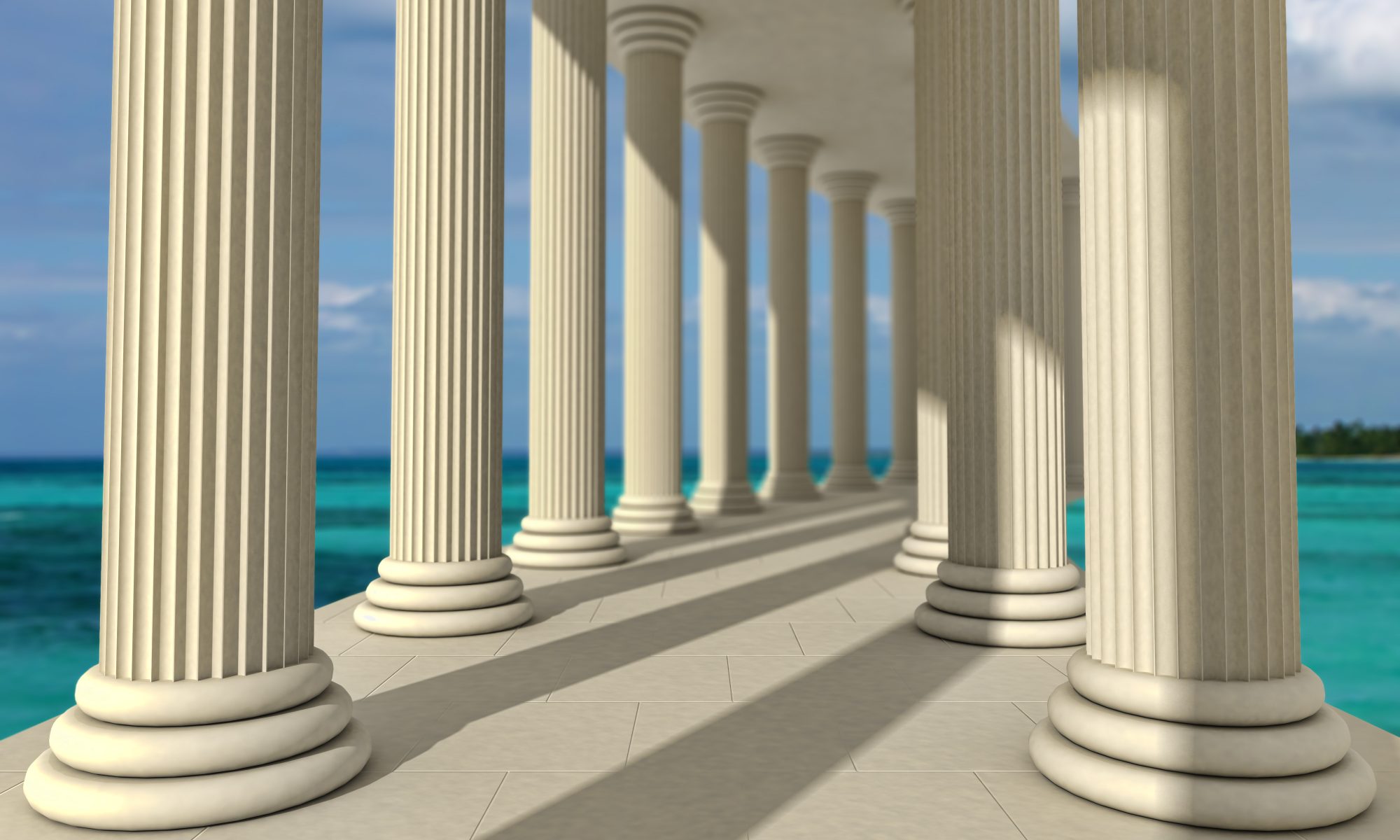

De Castro Leon – GENESIS PROJECT
ART, HISTORY, PHILOSOPHY, JEWELERY AND ALGOTRADING
Islamic Turkish Map Of Greece Circa 1880-1912


Period Images and fairly accurate reconstructions that convey the essence of past times with character and emotion, largely elitist and European centric to include Russia and Middle Eastern to include Iran and North Africa .

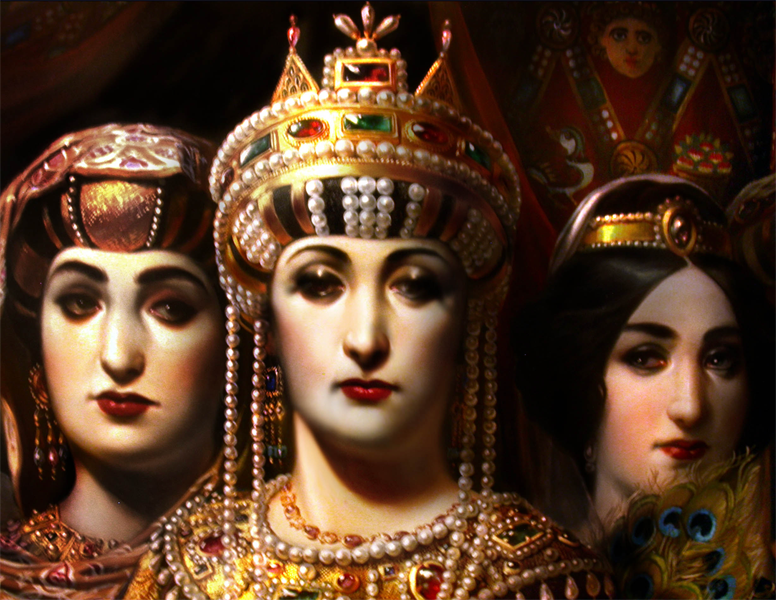
Augusta (Empress) Theodora 497-548A.D. One of the most influential and powerful of the Eastern Roman empresses, albeit from a humble background.



Βουκολέων – Boukoleon palace was the main palace for the Byzantine court until the 11th century, when the Palace of Blachernae was built by the Komnenos dynasty.

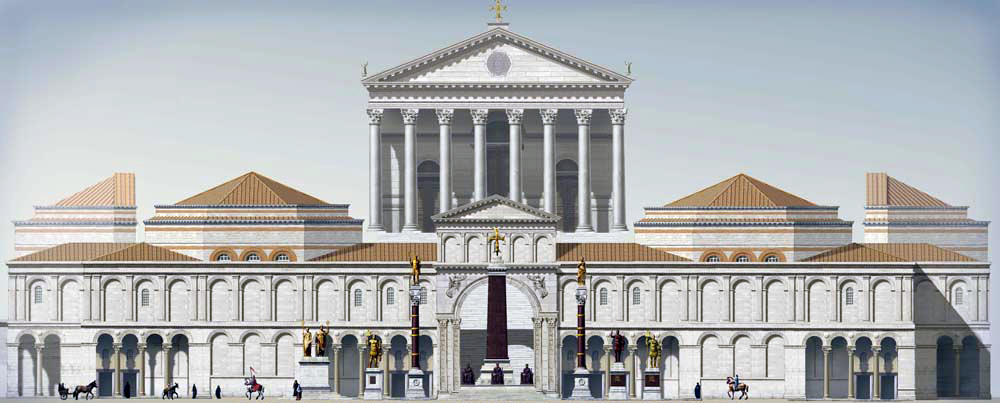
Forum of Augustus Theodosius, Built by Augustus Constantine I and named Forum Tauri (Forum of the Bull) later it was renamed after (Emperor) Theodosius I, in the middle of the forum was a Roman triumphal column erected in honour of Emperor Theodosius I. 400A.D. with additions thereafter.
The forum of Theodosius led to the Philadelphion which was a public square branching into 2 main roads into Constantinople. Built initially in 280A.D. with additions thereafter.
more soon ……
Whether Science is even a thing is the province of Philosophy in Greek this is called epistemology (επιστημολογία). Science is a branch of Philosophy
When I was 16 somehow a book on Cybernetics landed on my hands, I was then deported from Germany 🙄 back to Greece purportedly as an illegal immigrant (Déjà vu), however the book piqued my curiosity and I might have something to say about Cybernetic epistemology (The science of communications and automatic control systems in both machines and living things.) , a very hot topic in 2023 …. WEF globalist elite phantasies and such .
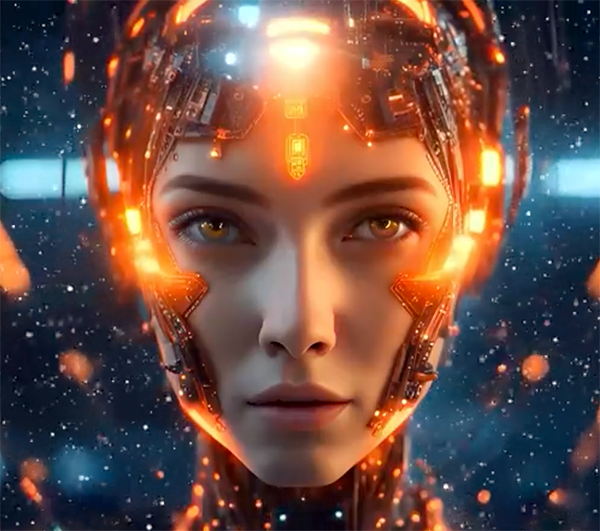
Interesting topics planned for this section are: Quantum entanglement and non behavioural communication in humans, Cyberborgs for time travel , considering the mechanics of time shifting in Einsten’s theories seems an ideal proposition..another is black holes and mathematical similarity of space mechanics and high level political /economic developments, after all mathematics has been called the language of the universe. Finally lets tie it all together with Aristotle, Freud, Einstein , Nietze, Marx and all… searching for the truth with outmost intellectual independence and honesty .
more soon when i find time, if there is any left by the time i get to it 🤣
Following the fall of Constantinople in 1453, all of Byzantine empire of which Greece was the dominant ethnicity and culture became part of Ottoman Turkey with the majority of Greeks eventually converting into Moslems aquiring a mostly ‘fake’ Turkish ethnicity.
Nontheless many Greeks and others identifying as Christians/westerners kept their religion and eventually gained independence in parts of the Ottoman empire.
This collection follows the mostly ‘Greek’ commercial experience (often of assimilated Jews) in the Ottoman state and later independent successor state of modern Greece, through the medium of financial instruments up to 1922 .
As Islamic religion was hostile to money lending it was Greeks, Italians, Armenians and Jews who were in charge of finance in the Ottoman empire.
Ελληνικά Χαρτονομίσματα Δραχμής
Greek Drachma ‘δραχμή’ banknotes were the official medium of monetary exchange in Greece from 1841 to 2001 when the currency was replaced by the euro ‘€’ code: EUR
Banknotes are officialy sanctioned artifacts, they provide an insight into the history and culture of the epoch they were in use, nearly always aspirational created by elites they provide an insight into social governance. Banknotes as a store of wealth also act as memorial of enterprise, labour, profits and economic prosperity.
In the interests of art, of appreciating the history and social culture of Europe to which the small nation of Greece is part of, I present here the banknotes of Greece, very many from our private collection, image sizes and valuations (*) are approximate.
It took 370 years of Ottoman occupation before Greece obtained partial independence, the country had flimsy governmental structures and haphazard finances, it was up to the Bavarian Civil servants and the new German king of Greece to sort these, a decree was issued by King Othon in 1841 for the creation of a bank, as the state had scarecely any capital or know how it fell into private citizens to create it, one that took the challenge was Georgios Stavros (formerly chief cashier of the state) who was the first apointed governor of the bank, in 1841 the bank was created as a discount and mortgage enterprise with 5000 shares worth 1000 drachmas each .
The Greek state bought 1000 shares, Nicholas Zosimas bought 500 shares, Jean-Gabriel Eynard bought 300 shares, King Louis of Bavaria (father of Othon king Greece) 200 shares, Konstantinos Vranis 150 shares, Adolf Graf 146 shares and Theodoros Rallis 100 shares. These where of Greek heritage or Philelenes, additionally Rothshild Frères Paris bought 50 shares and Jean-Gabriel Eynard bought 50 shares. Rothchild had extended finance for the creation of the new Kingdom of Greece, the 50 shares bought was to give credibility to the bank.

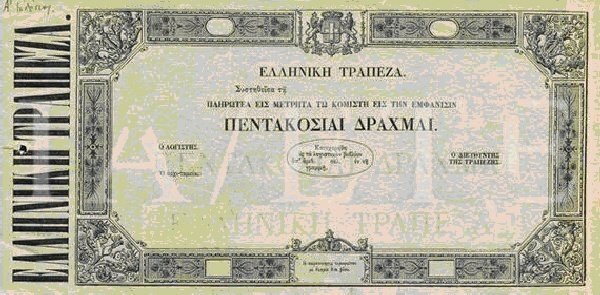
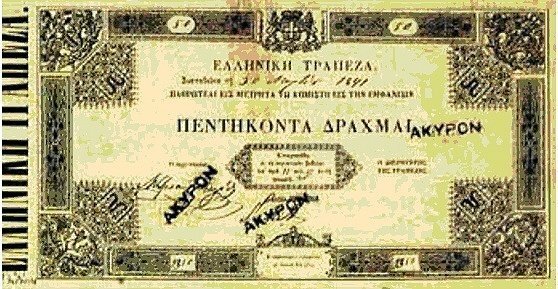
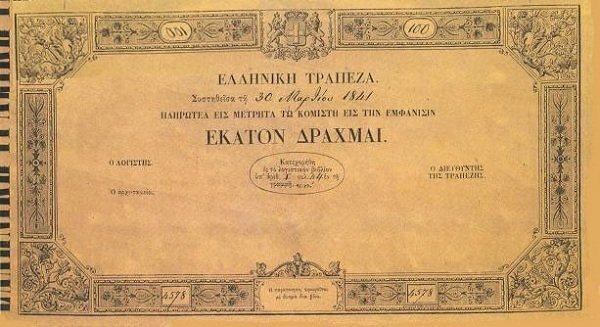

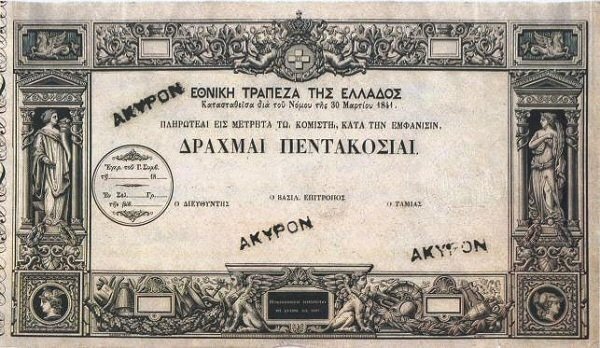
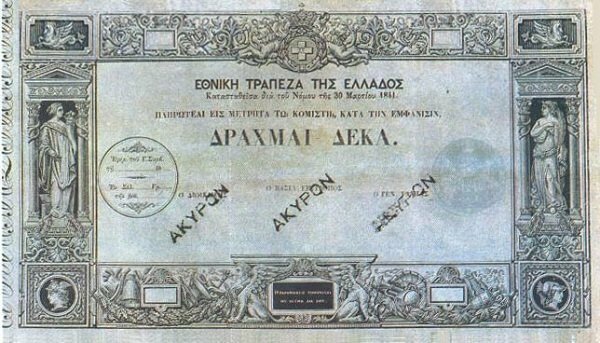

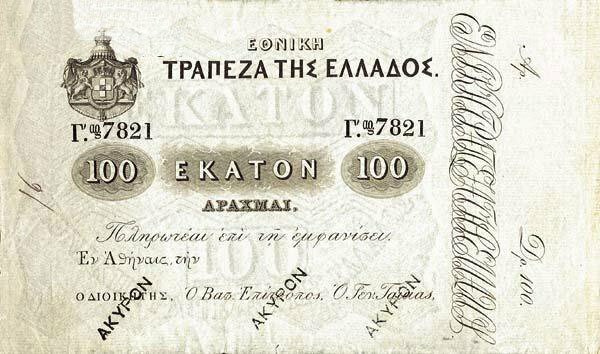

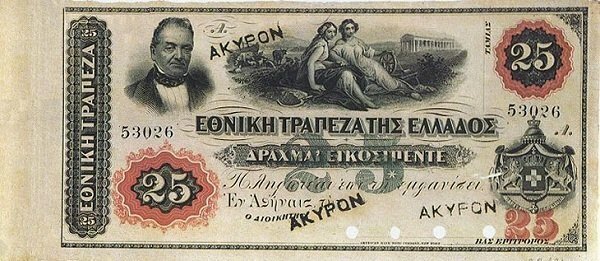
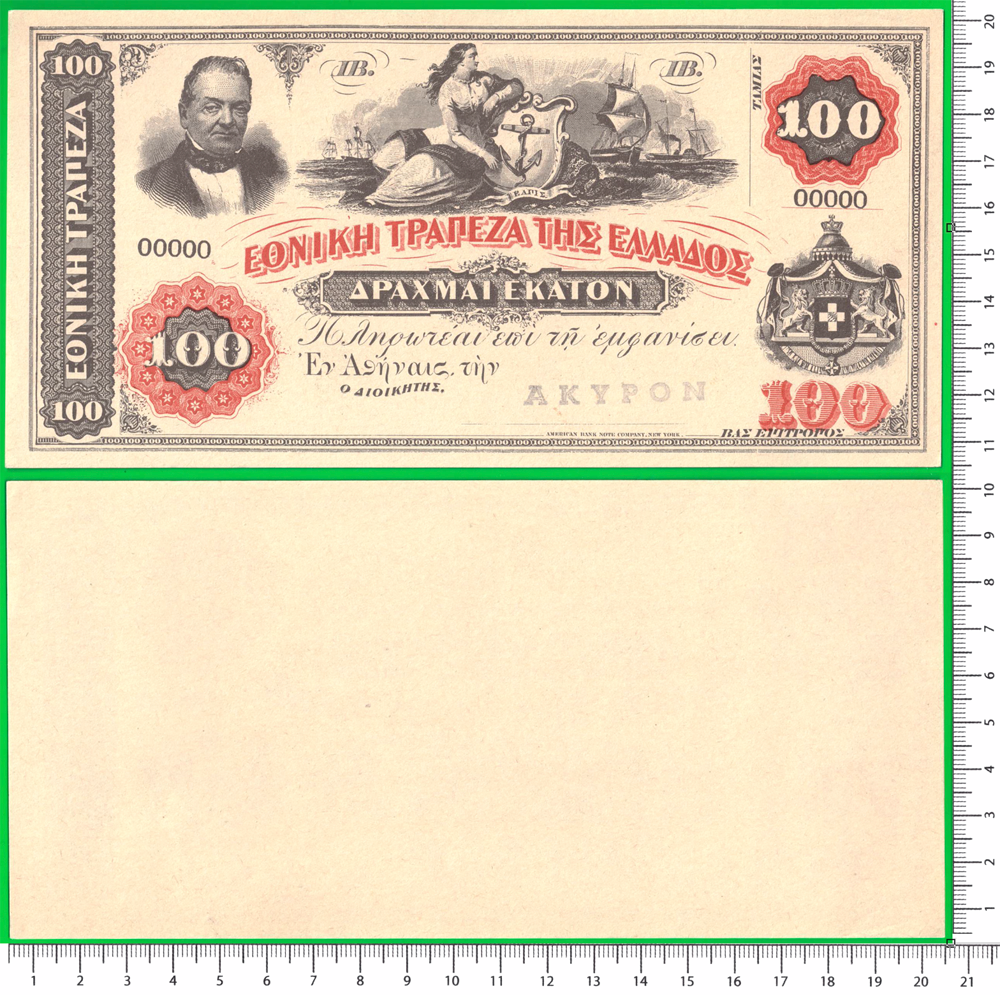
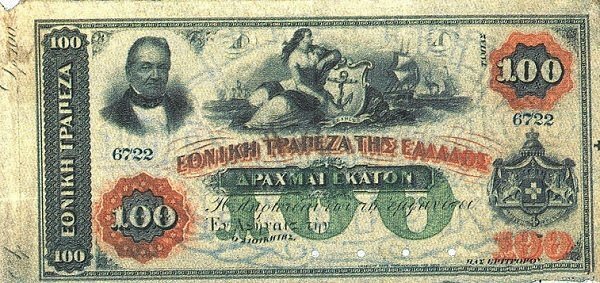


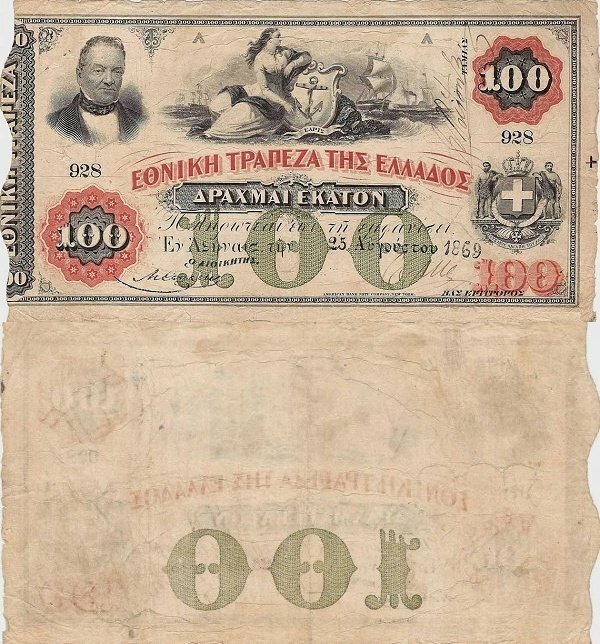
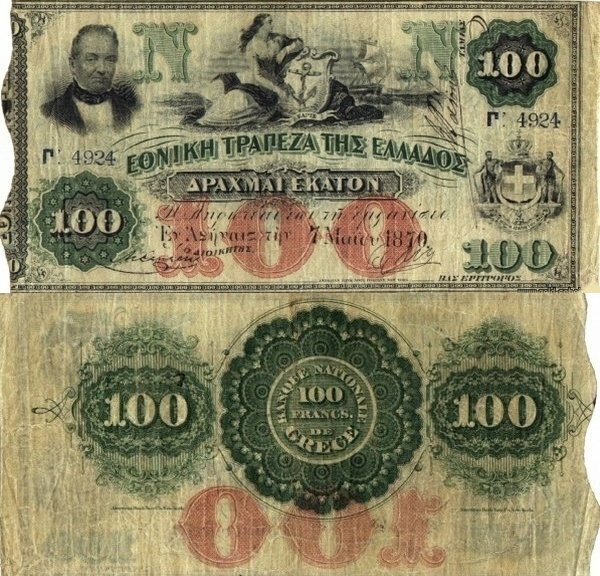

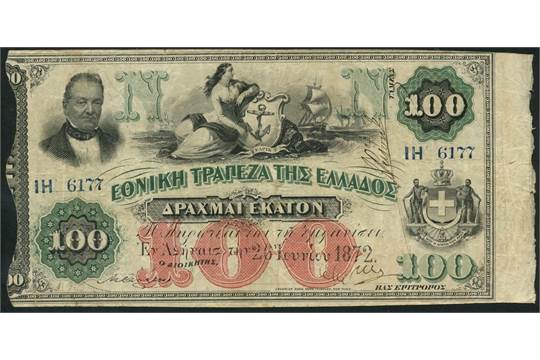
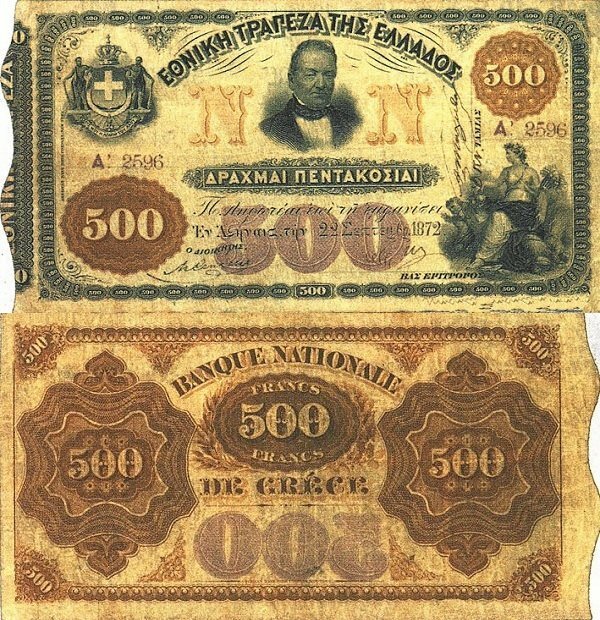
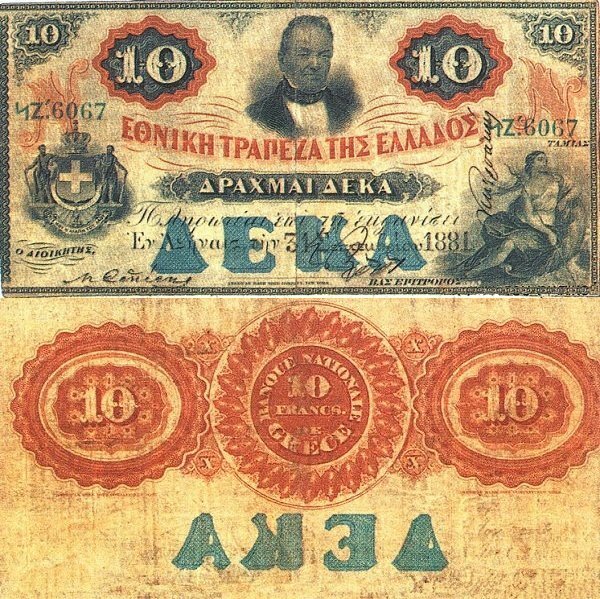
Ionian Bank was a British overseas Bank Operating in the Ionian Islands before they were incorporated into modern Greece.


This bank was eventually bought out by National Bank (Ethniki Trapeza)
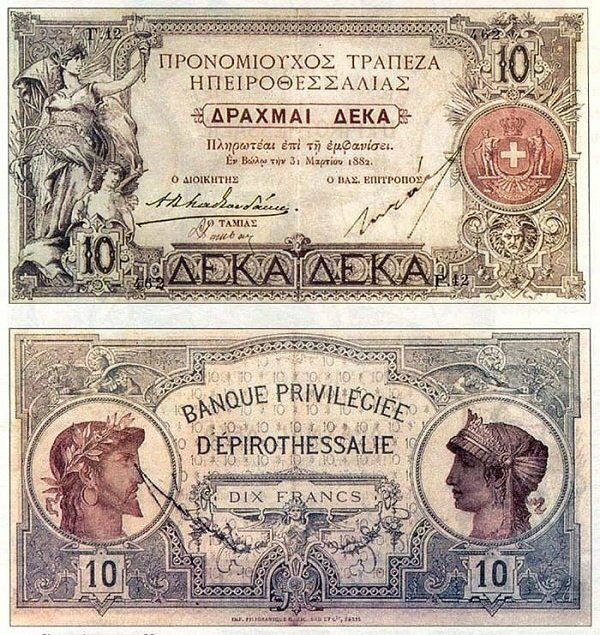





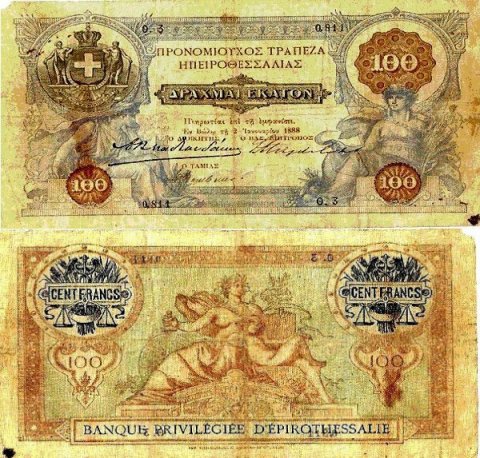

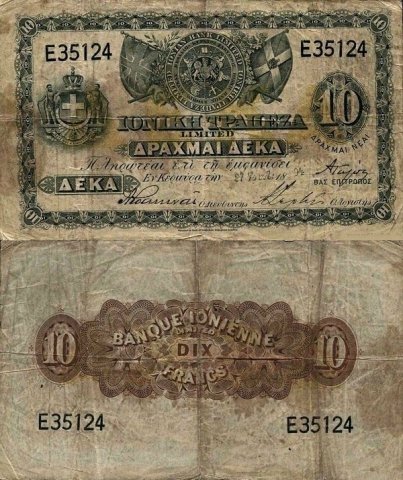
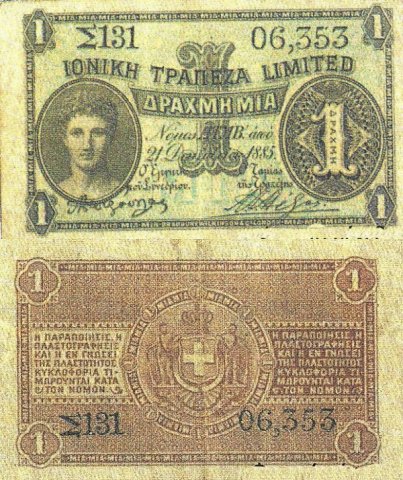
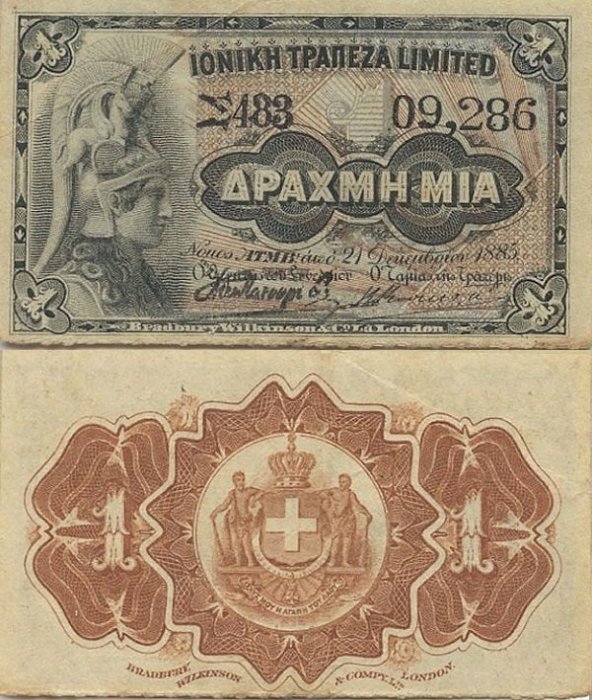
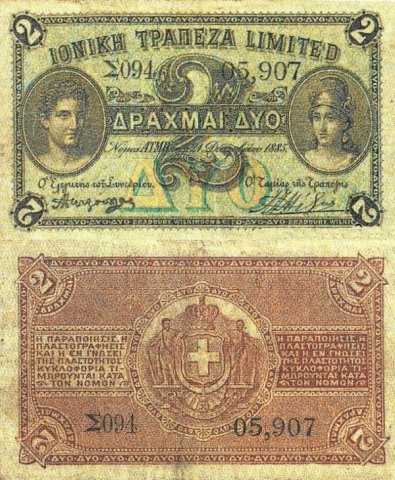
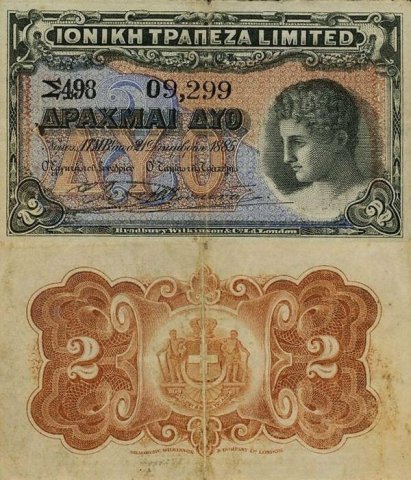
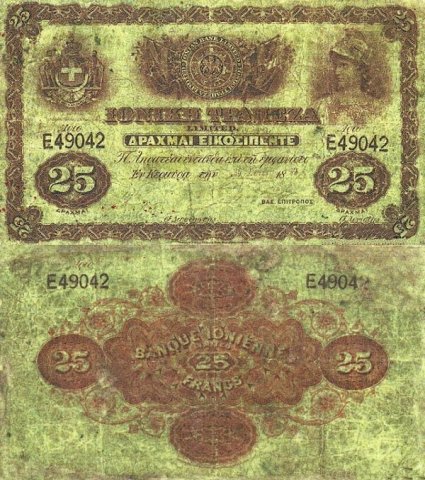


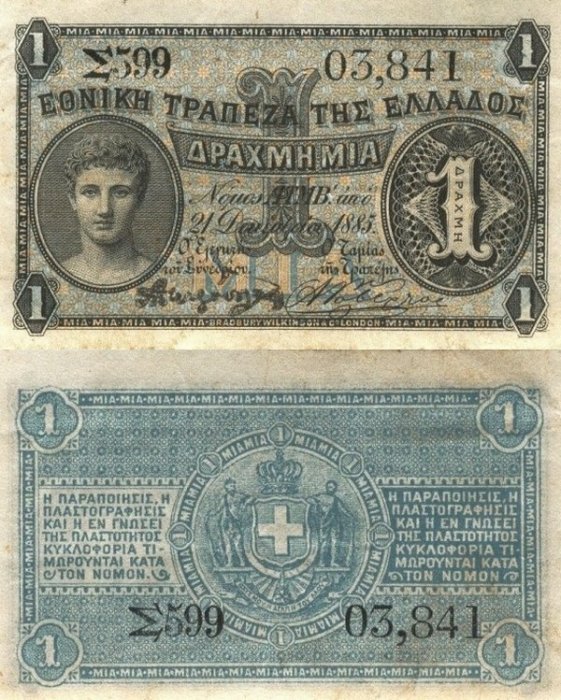
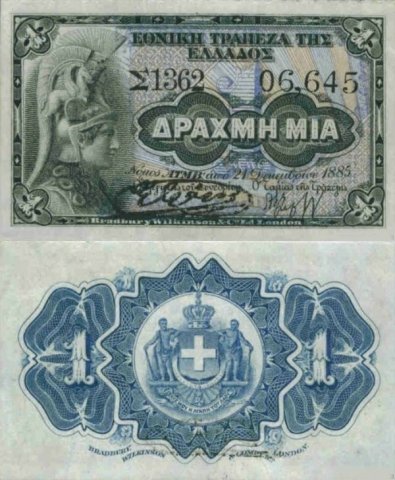

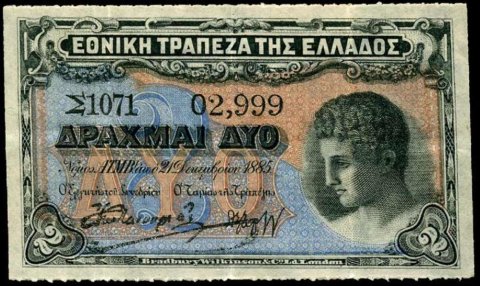
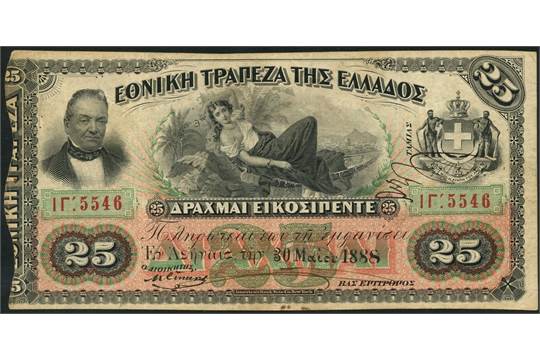


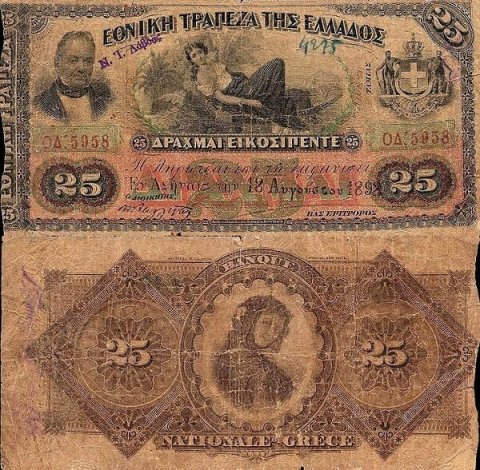
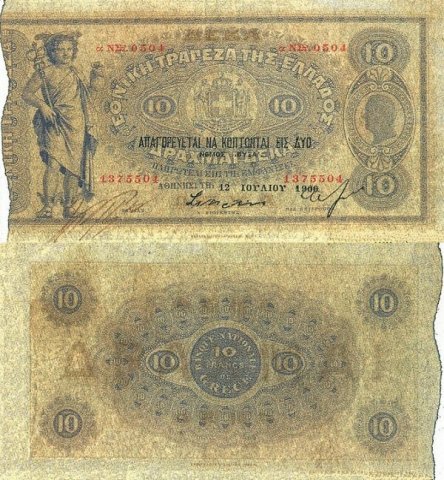


The Period 1910 to 1922 represents a turbulent time in Greek politics, the National schism between Monarchy and the Republic, the first Balkan war 1912-1913, the second Balkan war 1913, the first World War 1914-1918, The Greek-Turkish war 1919-1922.
Surprisingly, the period was handled exceptionally well in financial terms with great stability which only seems to have started running into serious trouble briefly around 1910 and then more seriously around 1921-1922 as can be seen reflected in the banknotes.


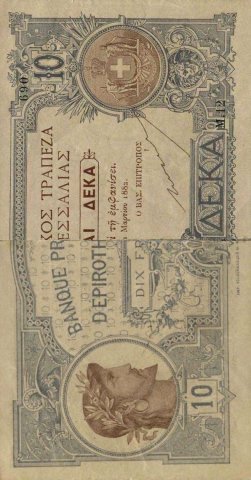
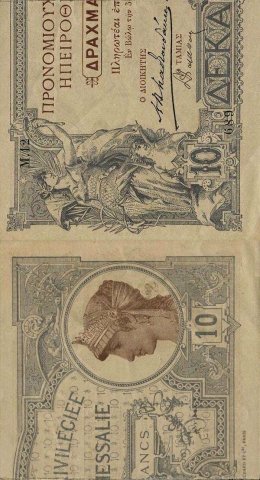

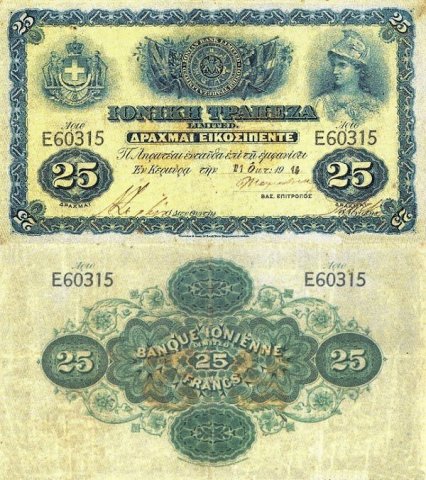
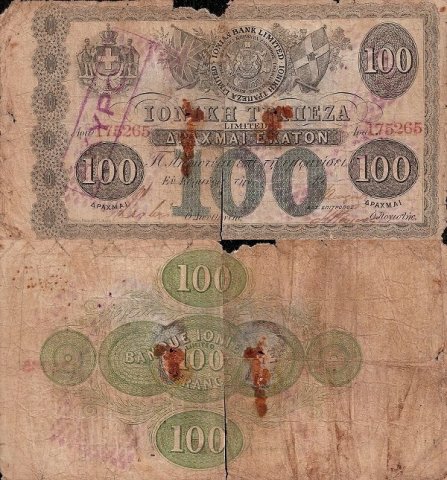
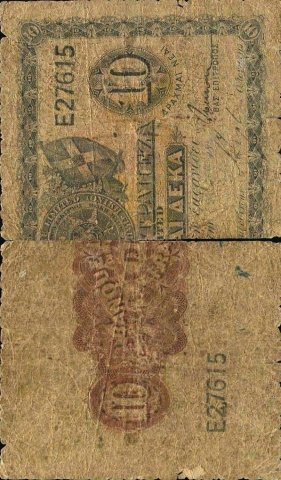
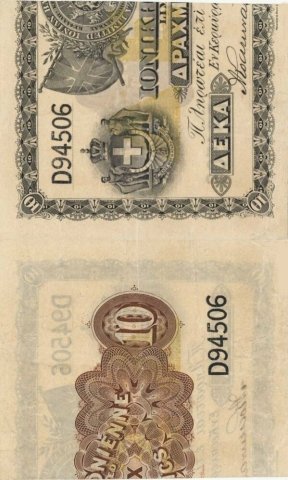
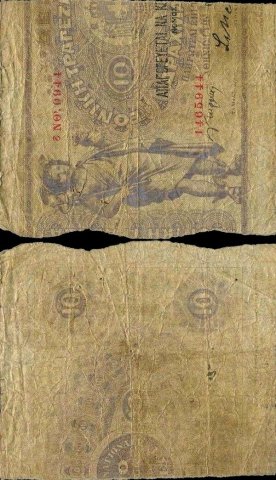
Some banknotes are cut in half, this was due to forced loan from the public, the law of 25/3/1922 stated that every banknote had to be cut in half, the left half remained in circulation at half face value and the right half exchanged by the state for a 20 year government bond, later newly issued banknotes that did not need to be cut in half beard the stamp ‘NEON’.

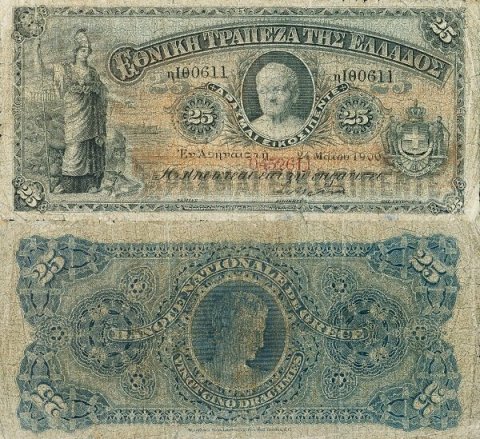
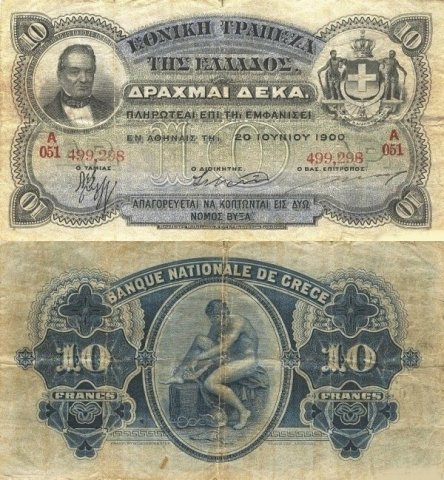

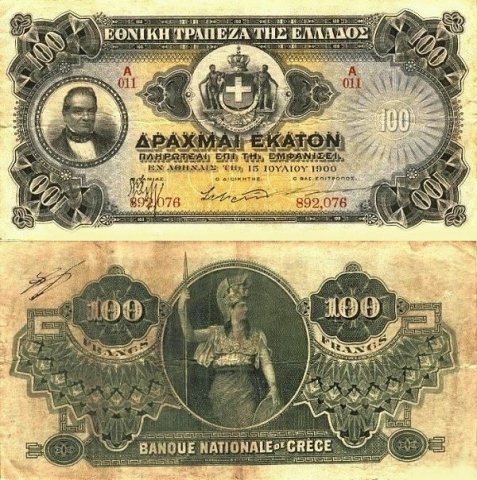
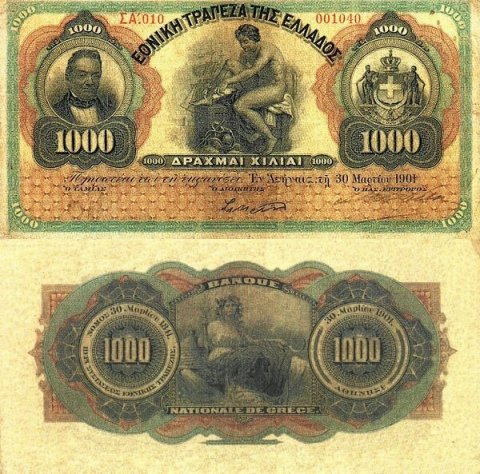
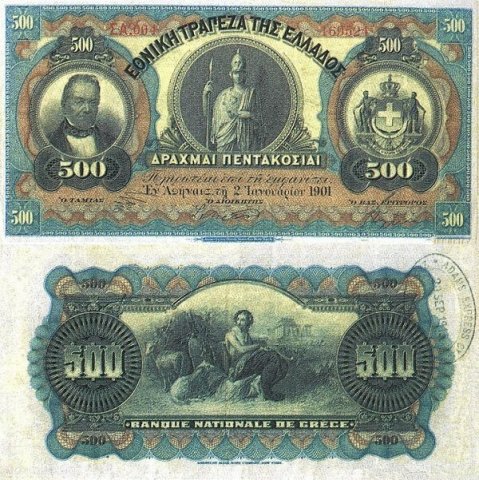
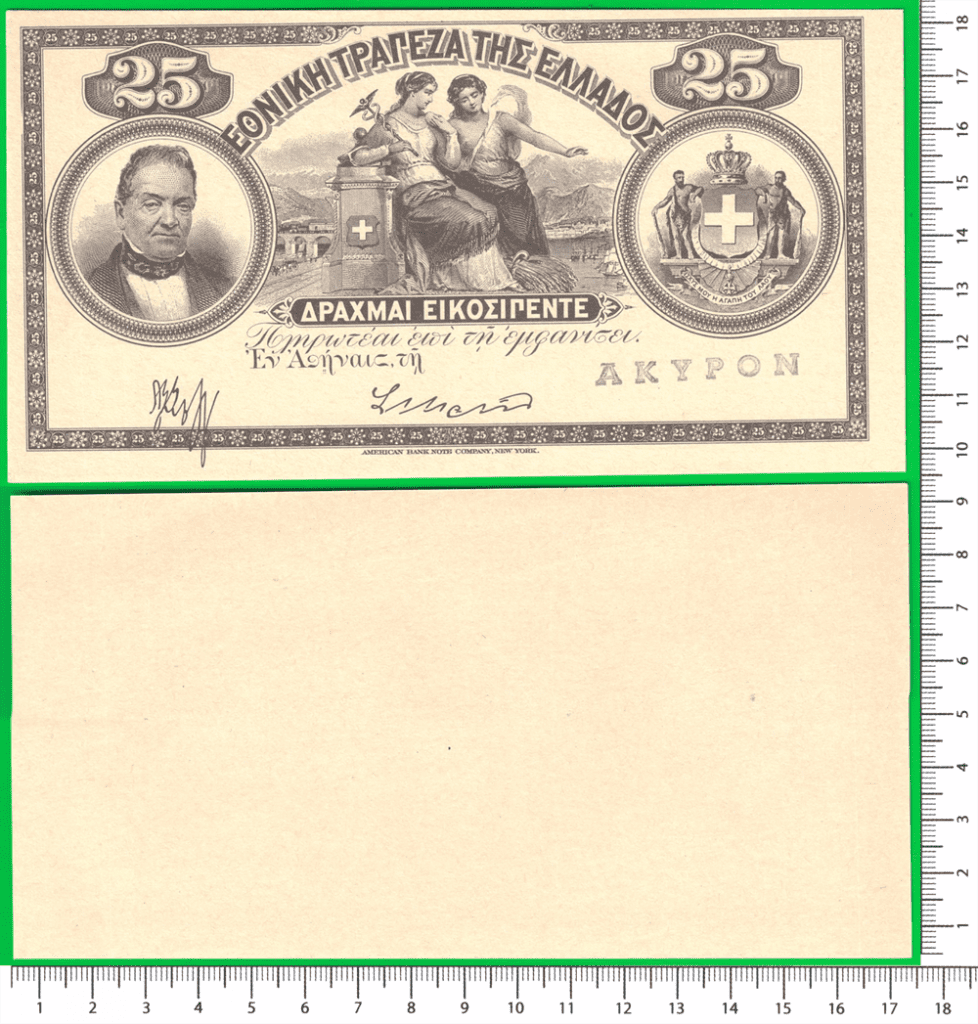
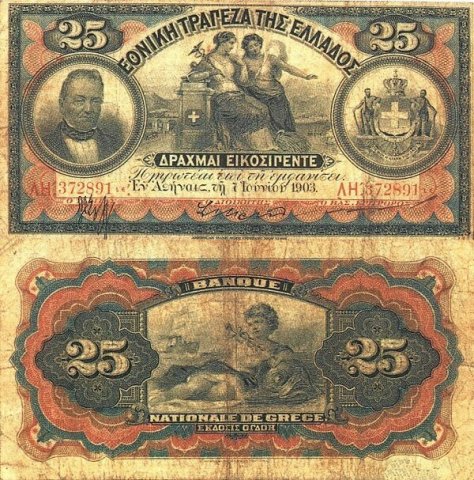
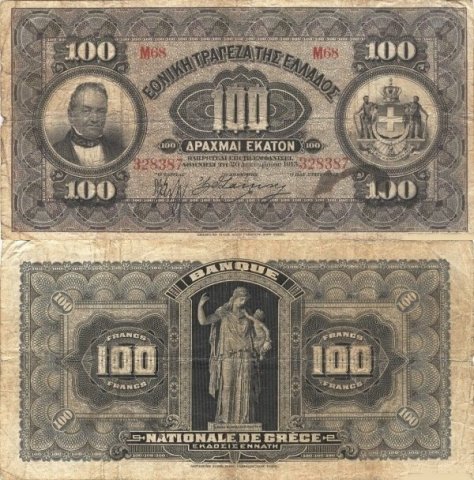
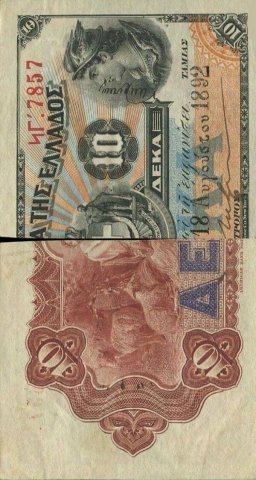
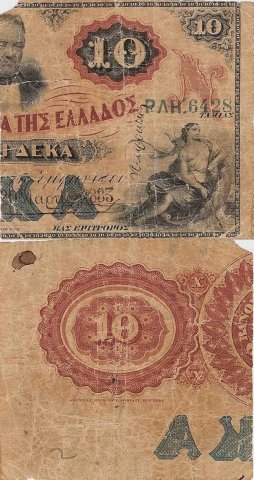
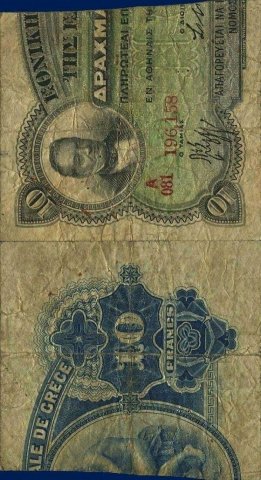
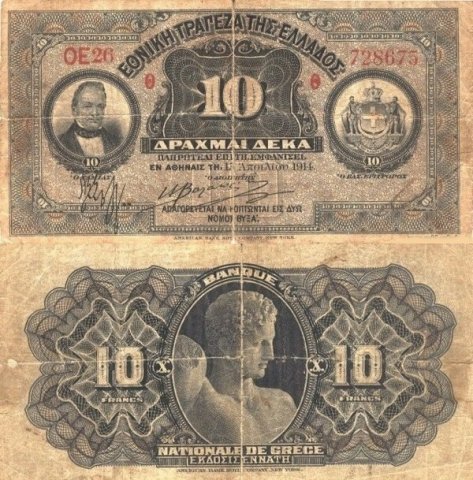
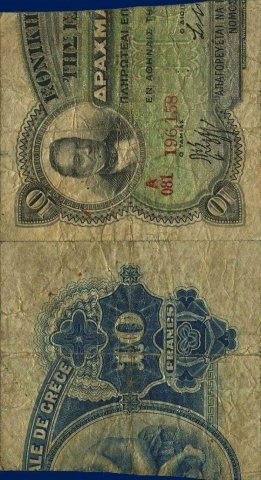


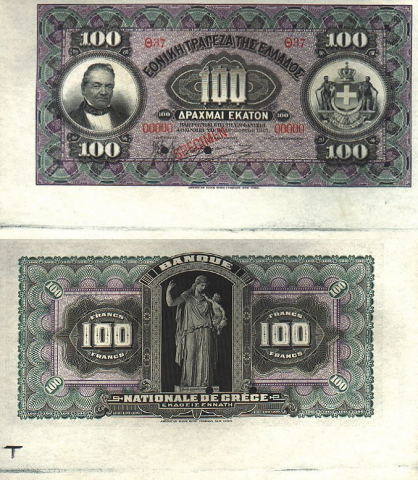
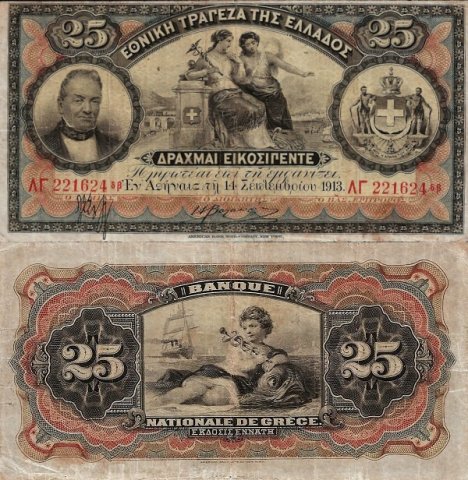

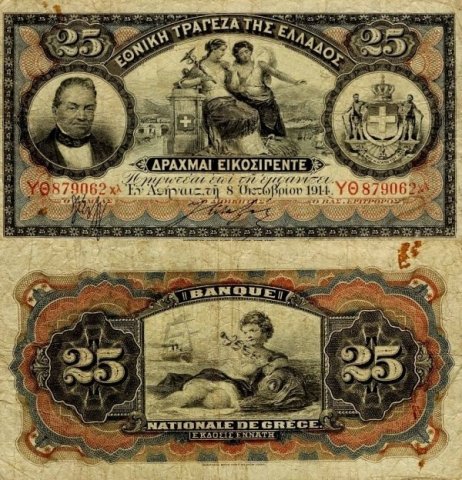
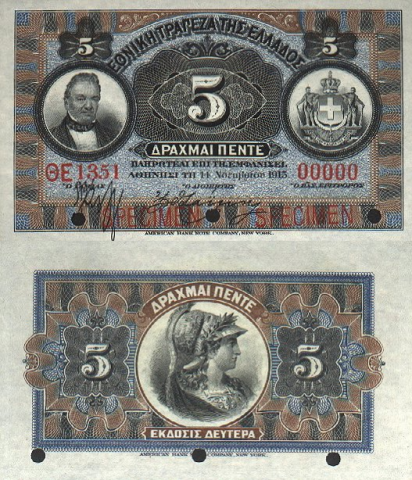
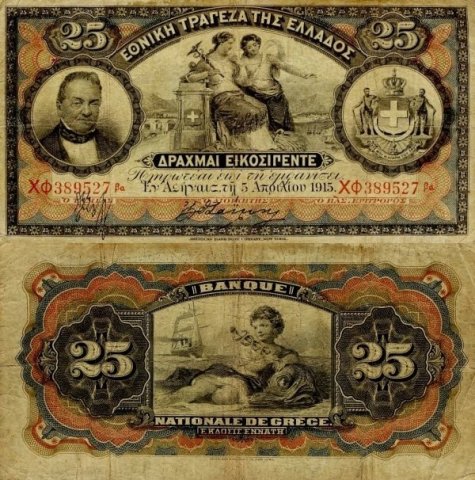

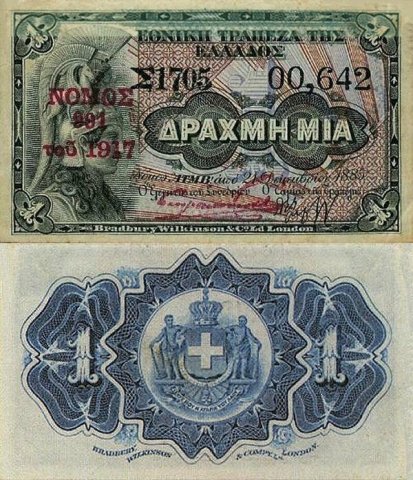
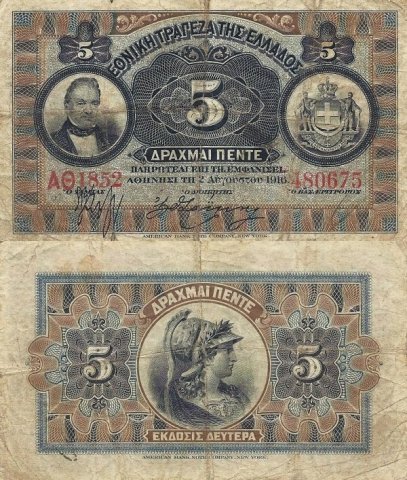



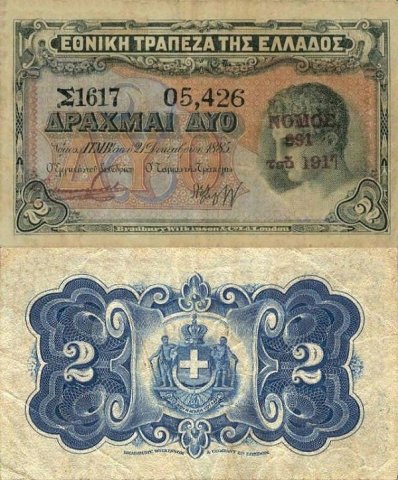
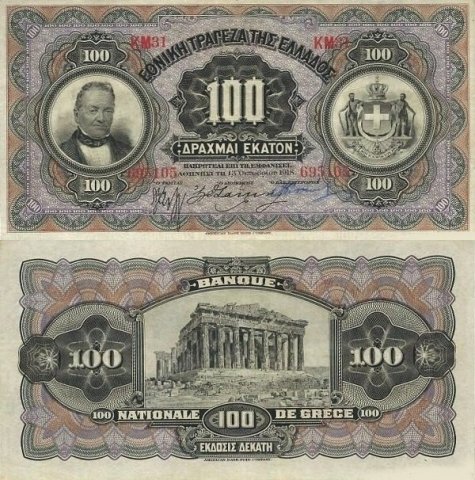
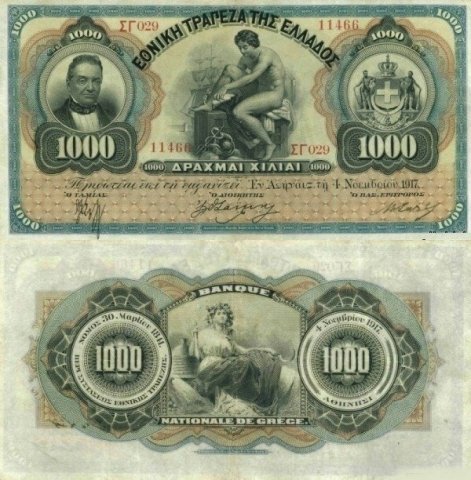

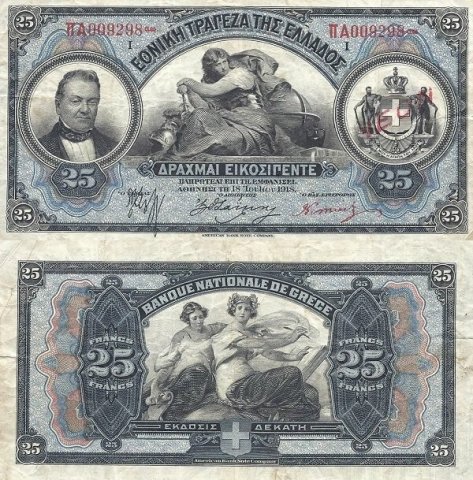
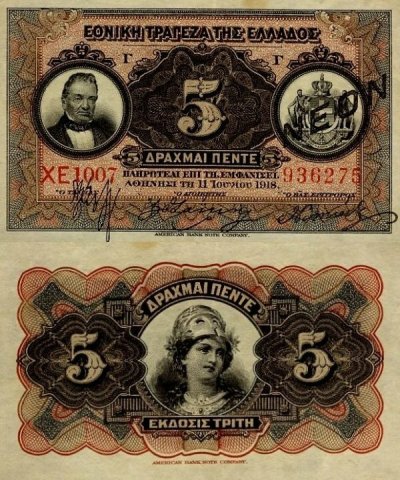
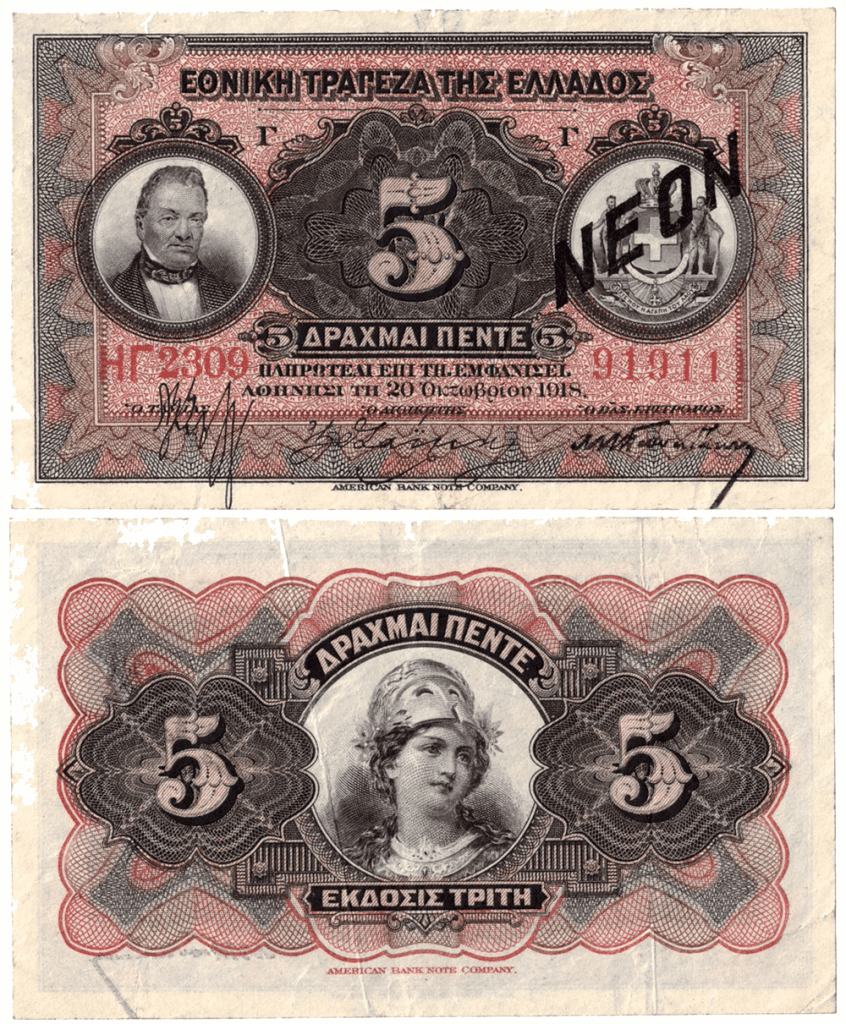

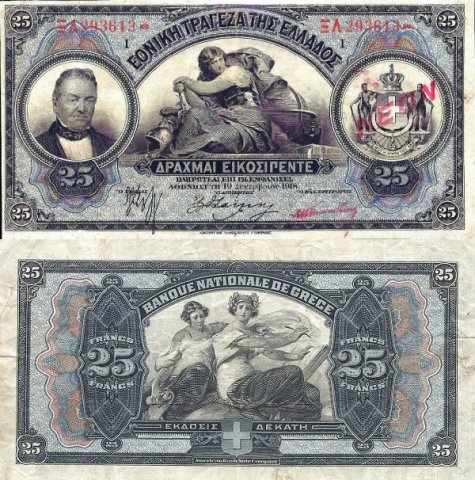
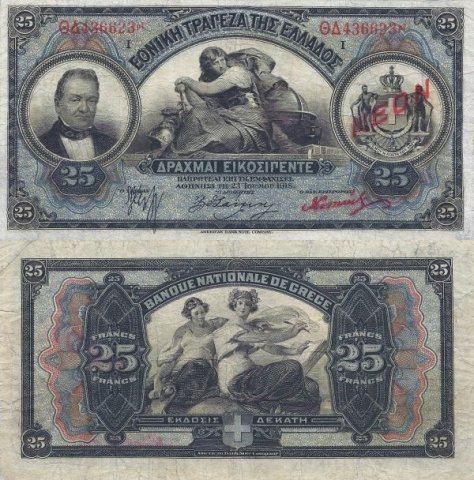
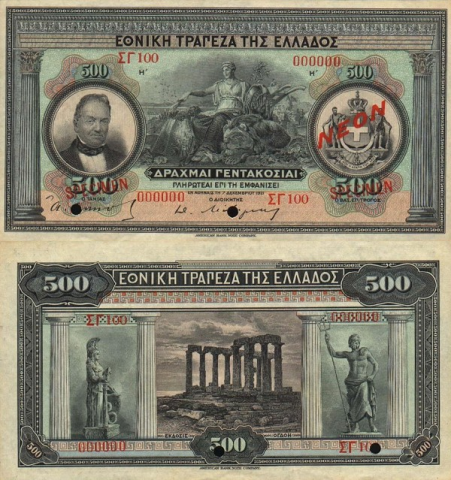
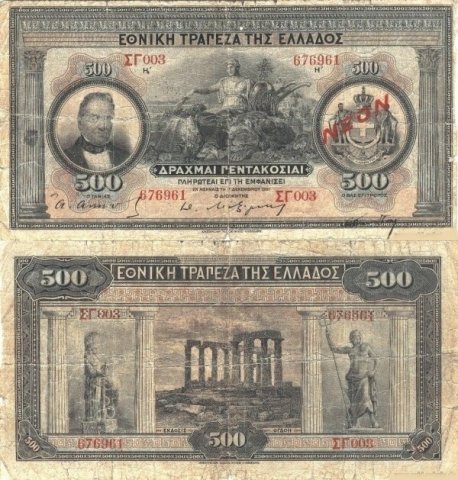


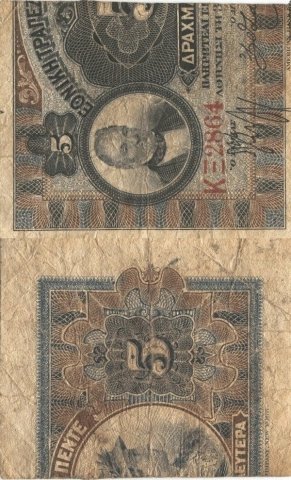

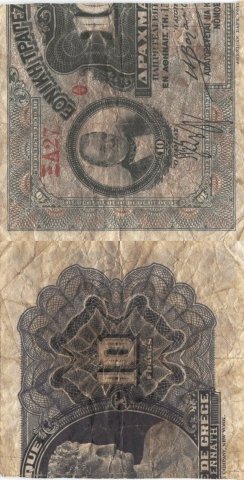


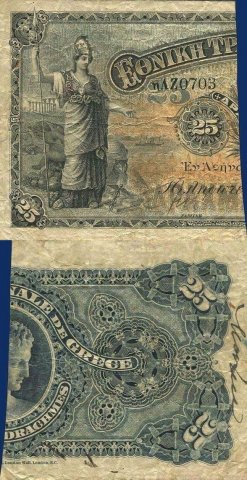


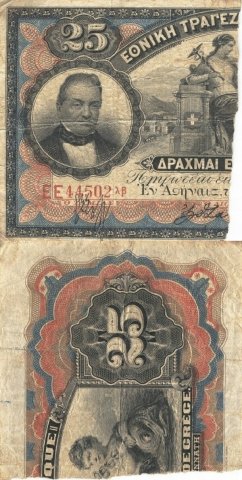
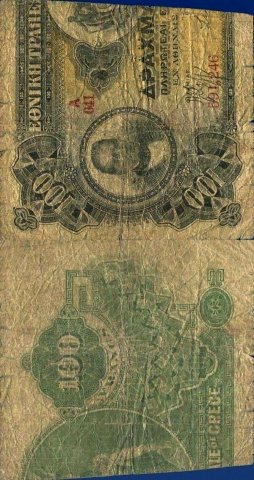
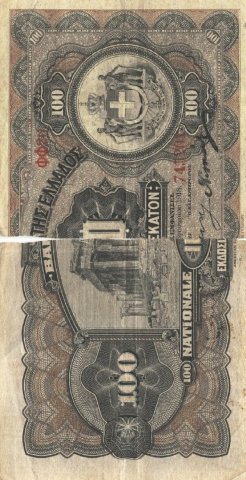


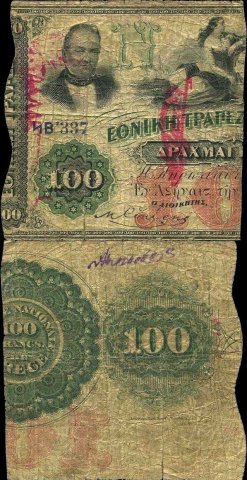



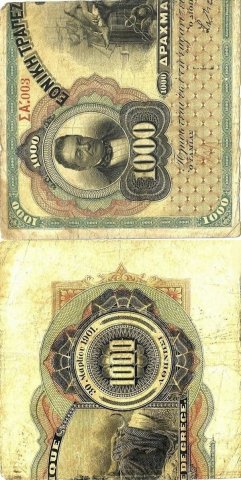


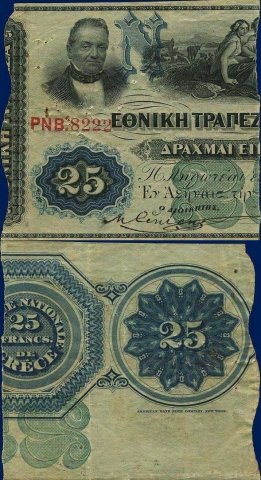
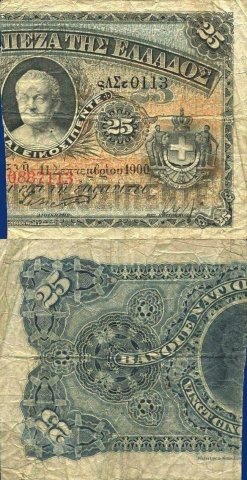
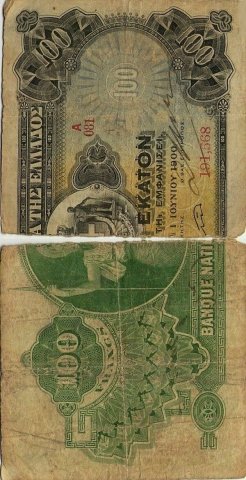



Due to inability to mint coins the Greek state issued banknotes instead until the end of the Greek-Turkish war
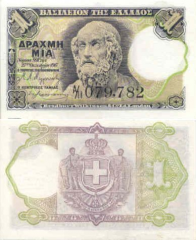
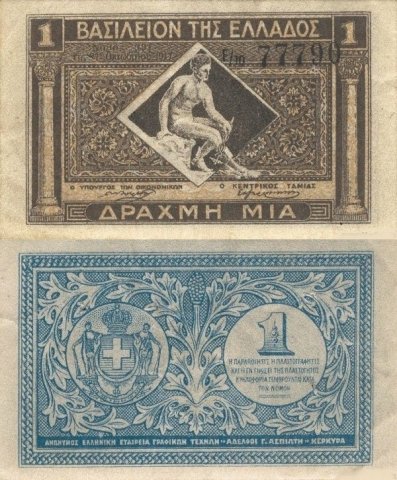
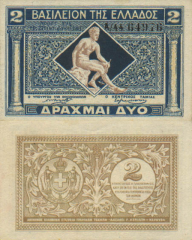
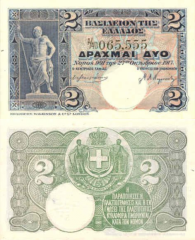


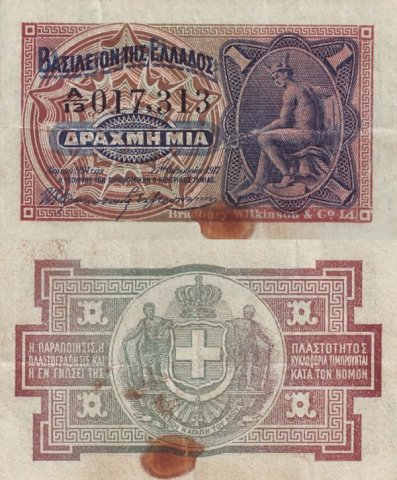


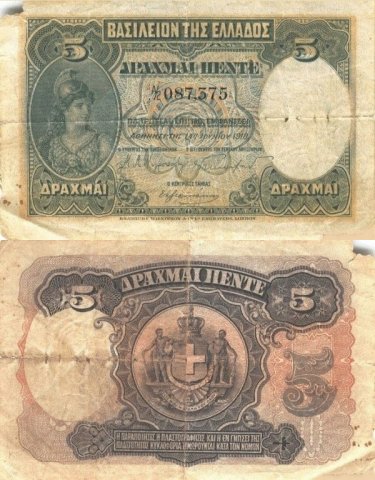

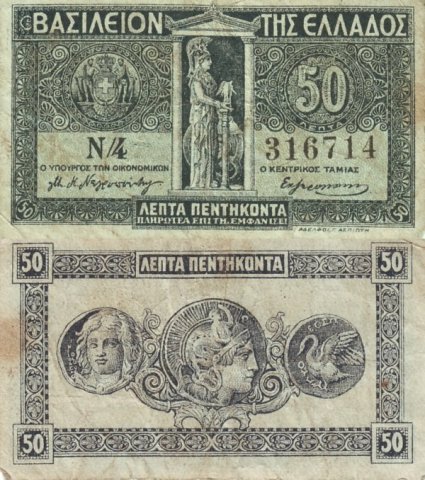

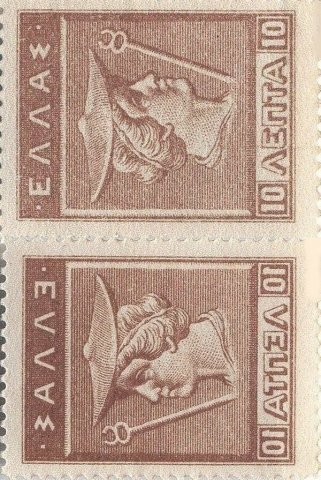
This period starts with the end of wars and takes us to the establishment of the Bank of Greece separate from the National Bank which up to then fulfilled the role of central bank of Greece despite being a mostly private bank.
Banknotes, Inflation and Economic Growth
Inflation in those days was dealt with the issuance of new banknotes, that is the reason for issuing the same denomination with different designs that would otherwise be confusing, if this is not possible or deemed not very successful then they stamp the word NEW (‘NEON’) on the banknote. Reprinting of the same design usually indicates increasing money supply due to economic growth rather than inflation … apart from enjoying the banknotes you can also learn here 🙂 Shalom.
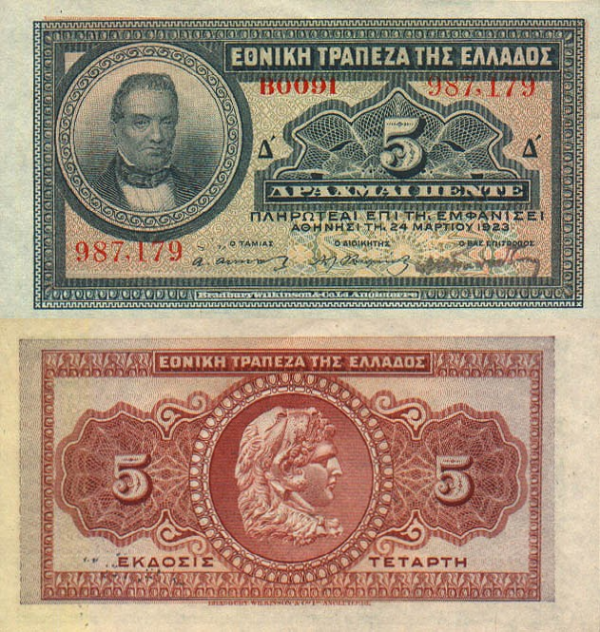

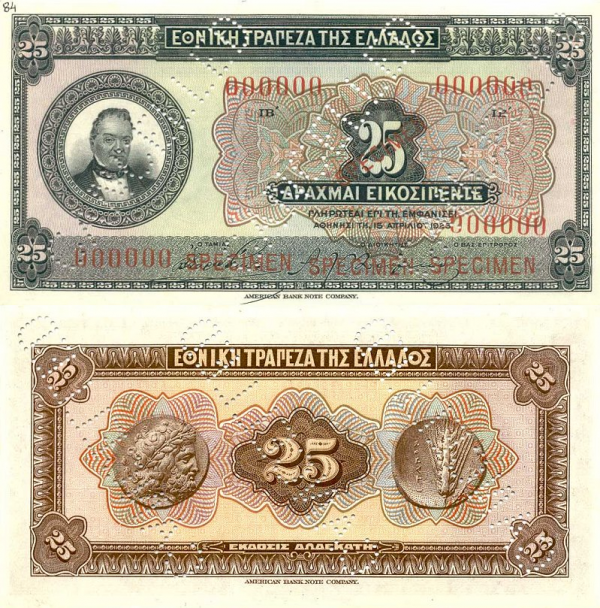

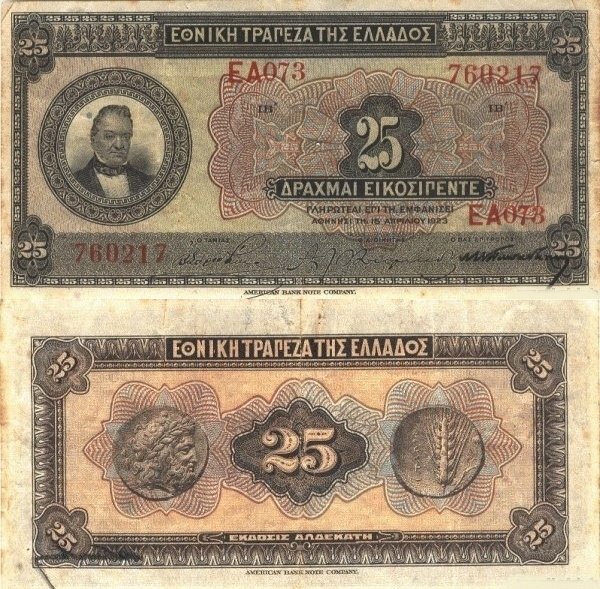
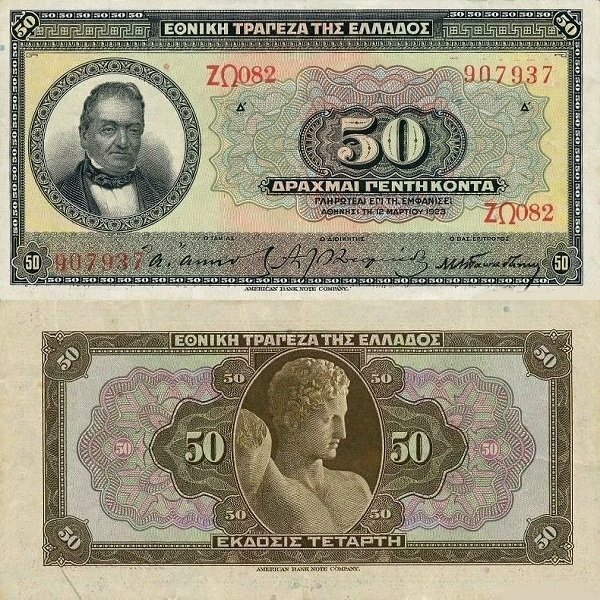
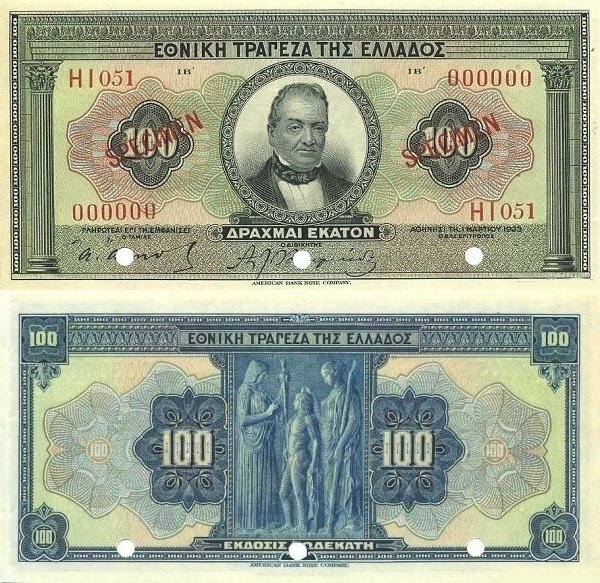

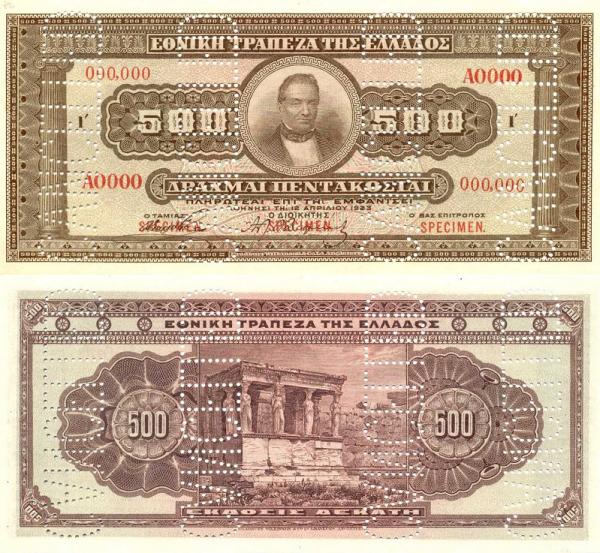

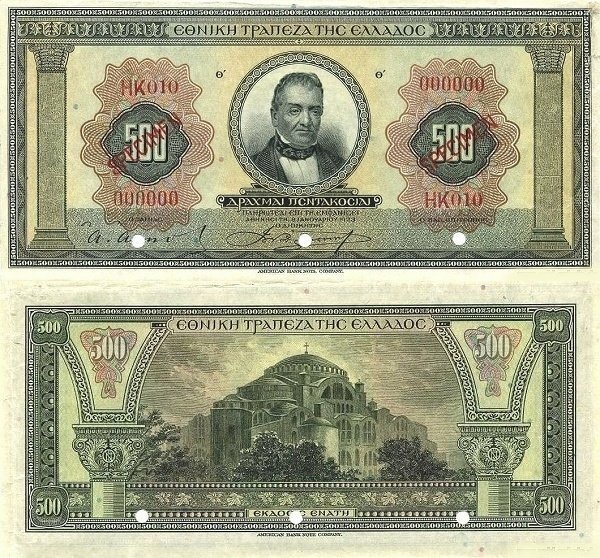

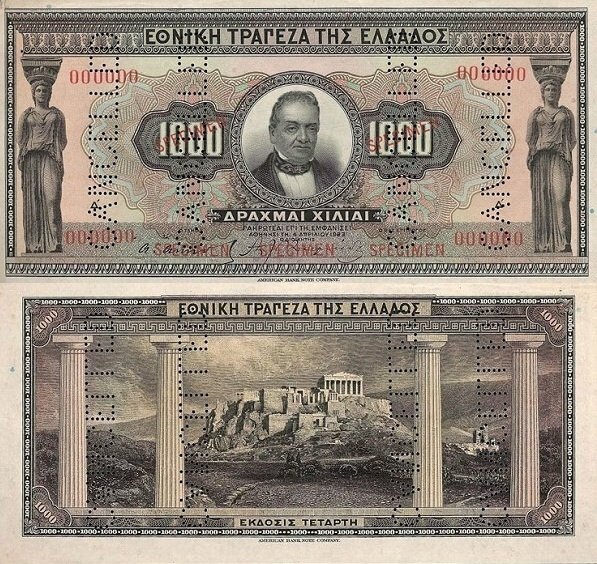


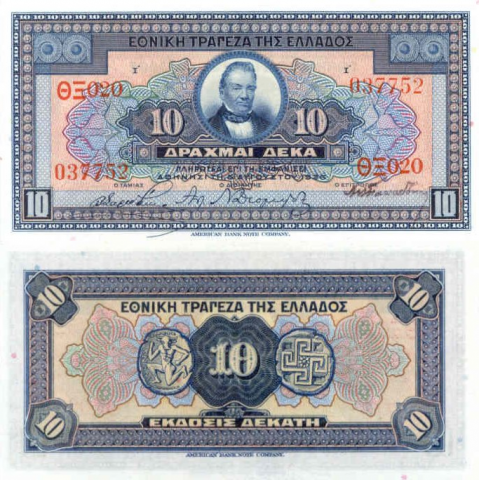
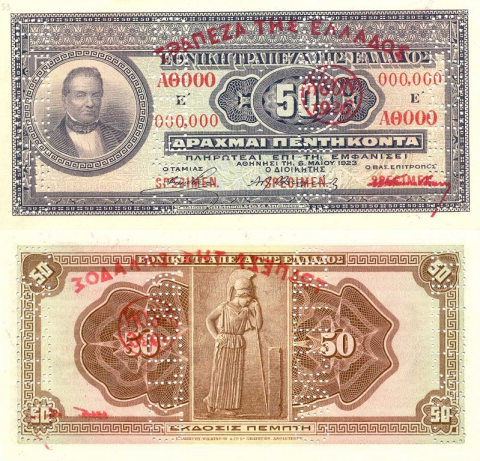




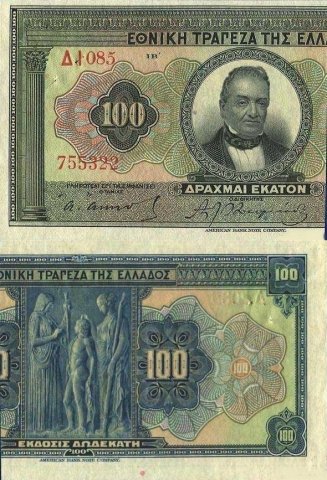
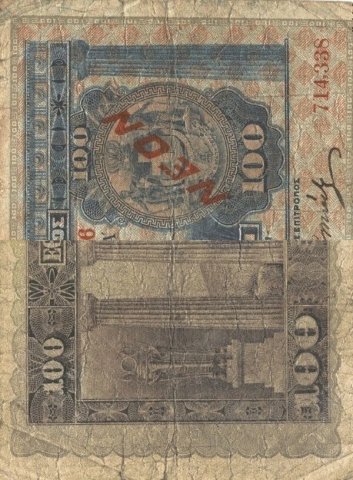

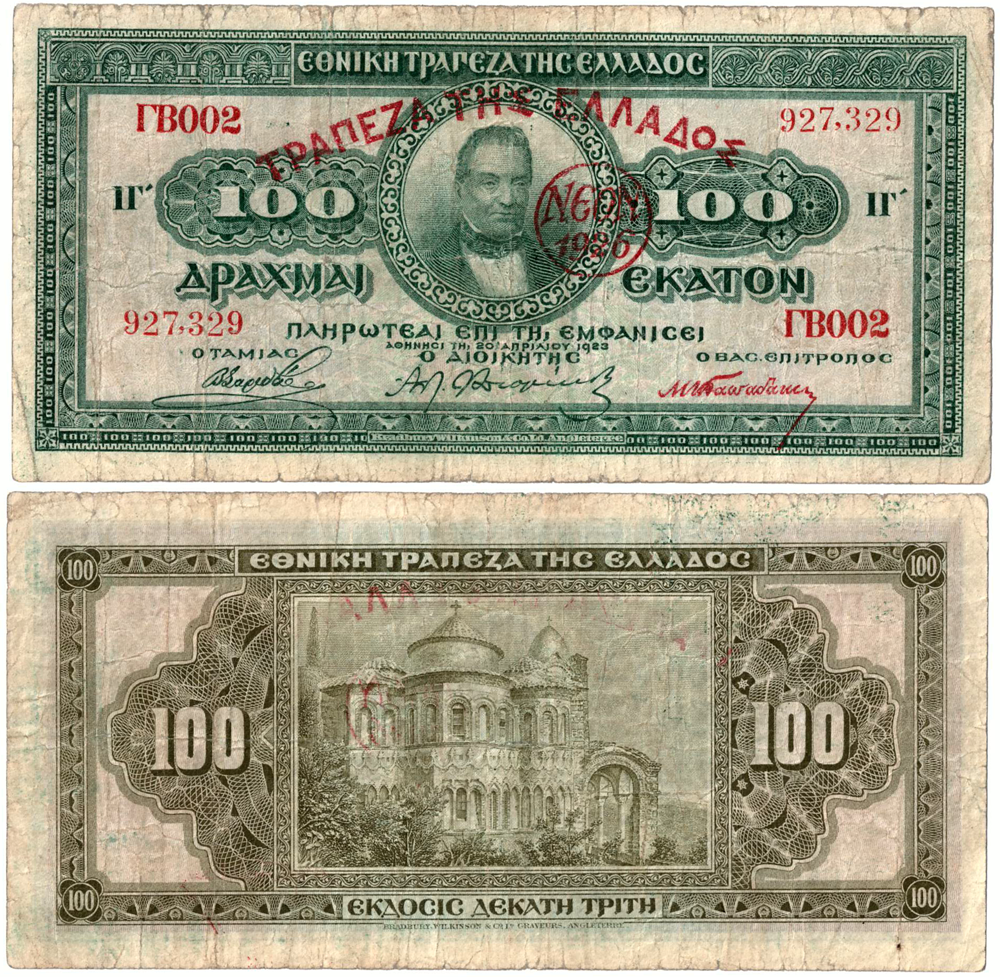
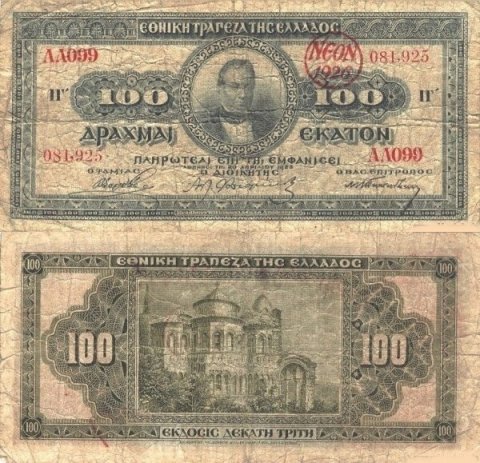
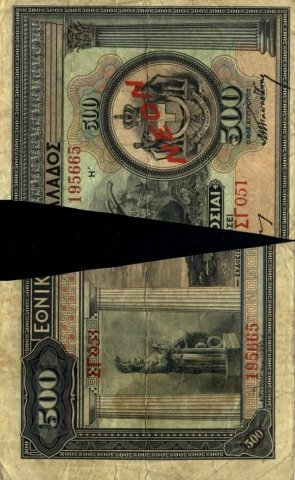


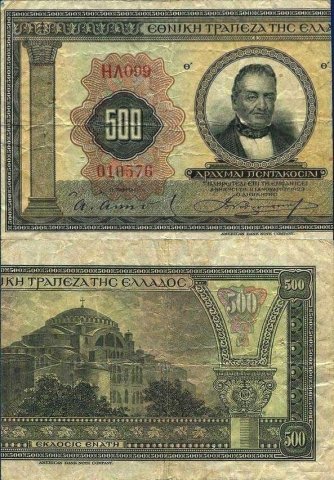
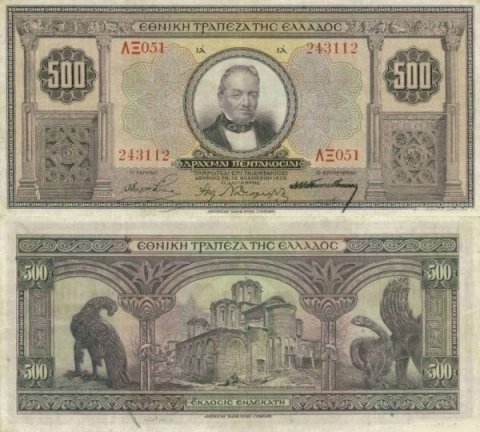
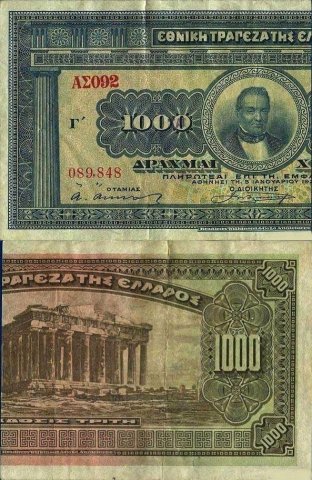
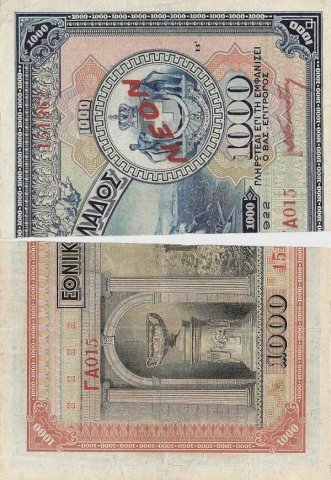
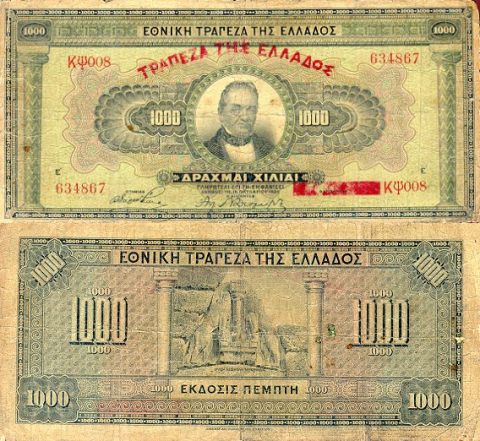
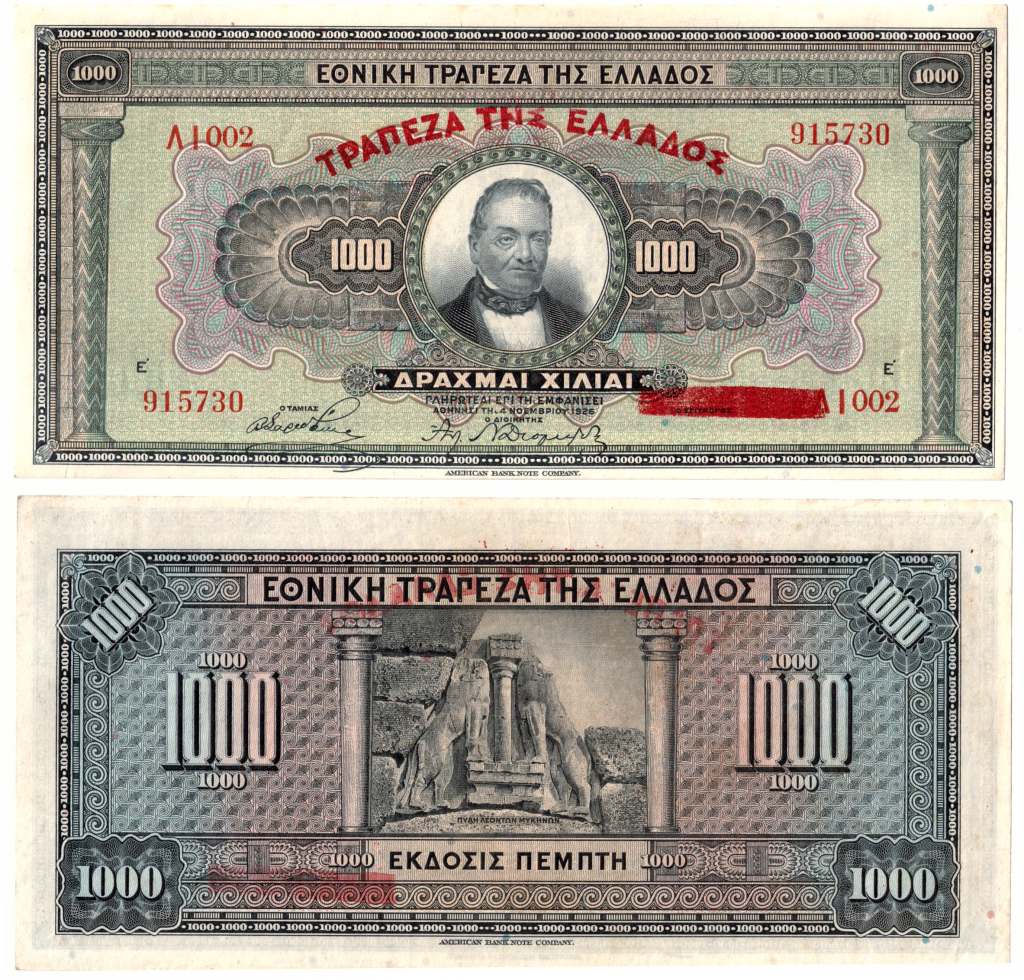
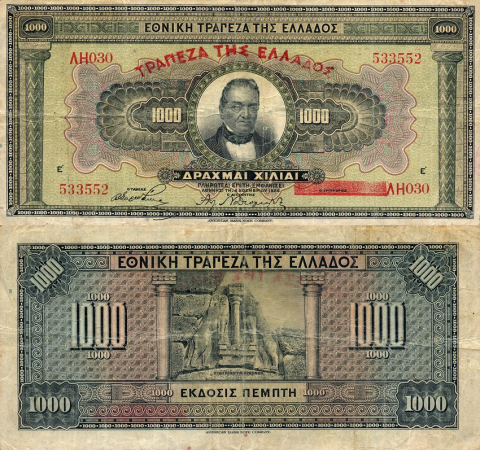



In 1927 the Bank Of Greece was set up as the nations central bank with sole authority to issue legal tender, initially Banknotes of the National Bank Of Greece stamped in red with BANK OF GREECE were issued until the new banknotes were ready.
Notice how the new banknote design 1932 onwards is more nationalistic and folksy and less professional, hint: the ‘democratisation’ of wealth had to make the banknotes appealing to common folk not just to elites.
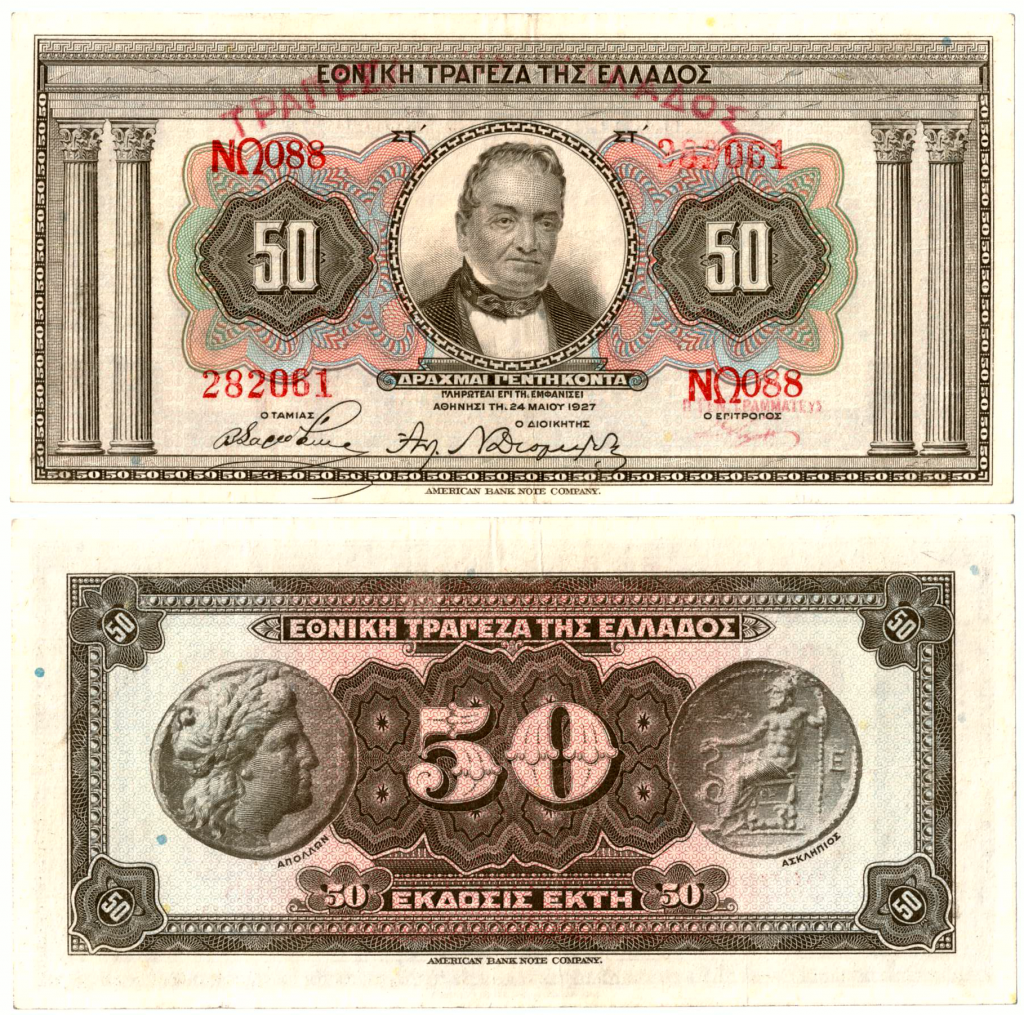
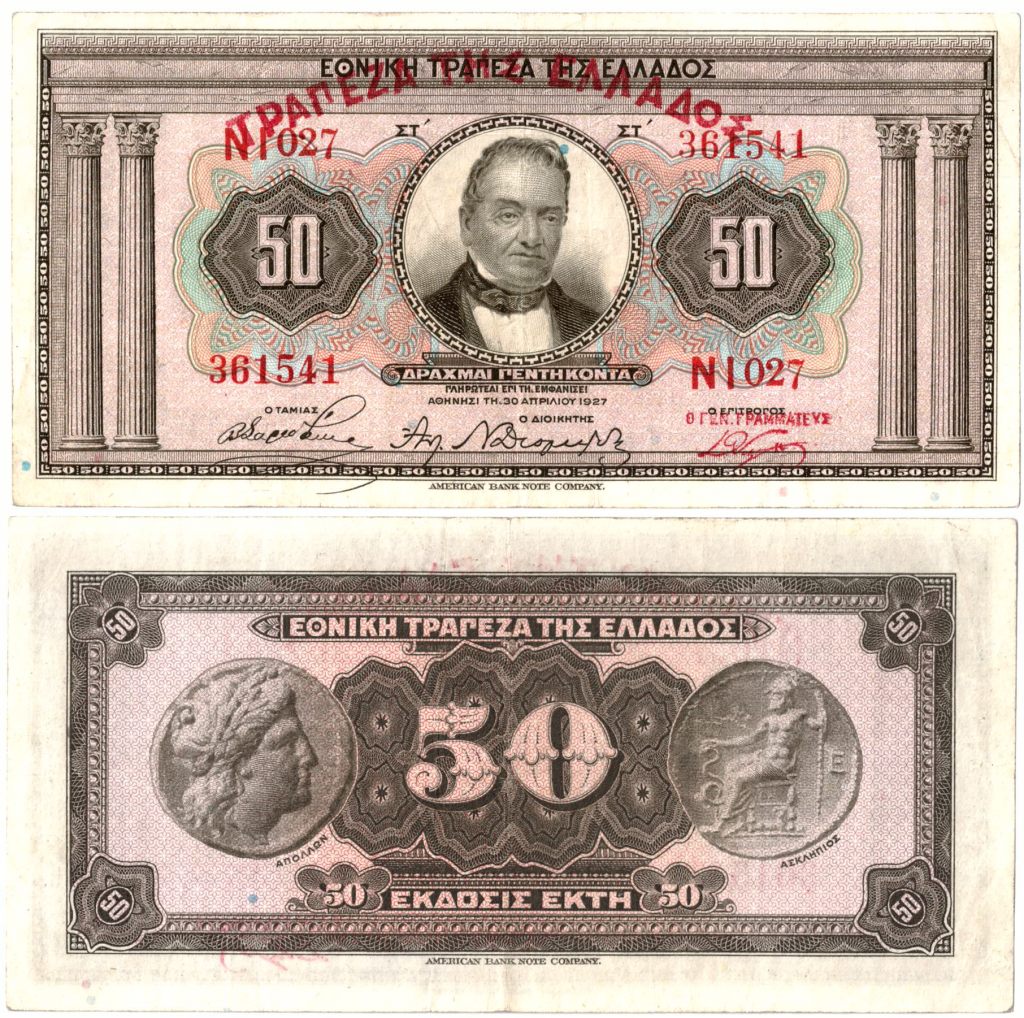

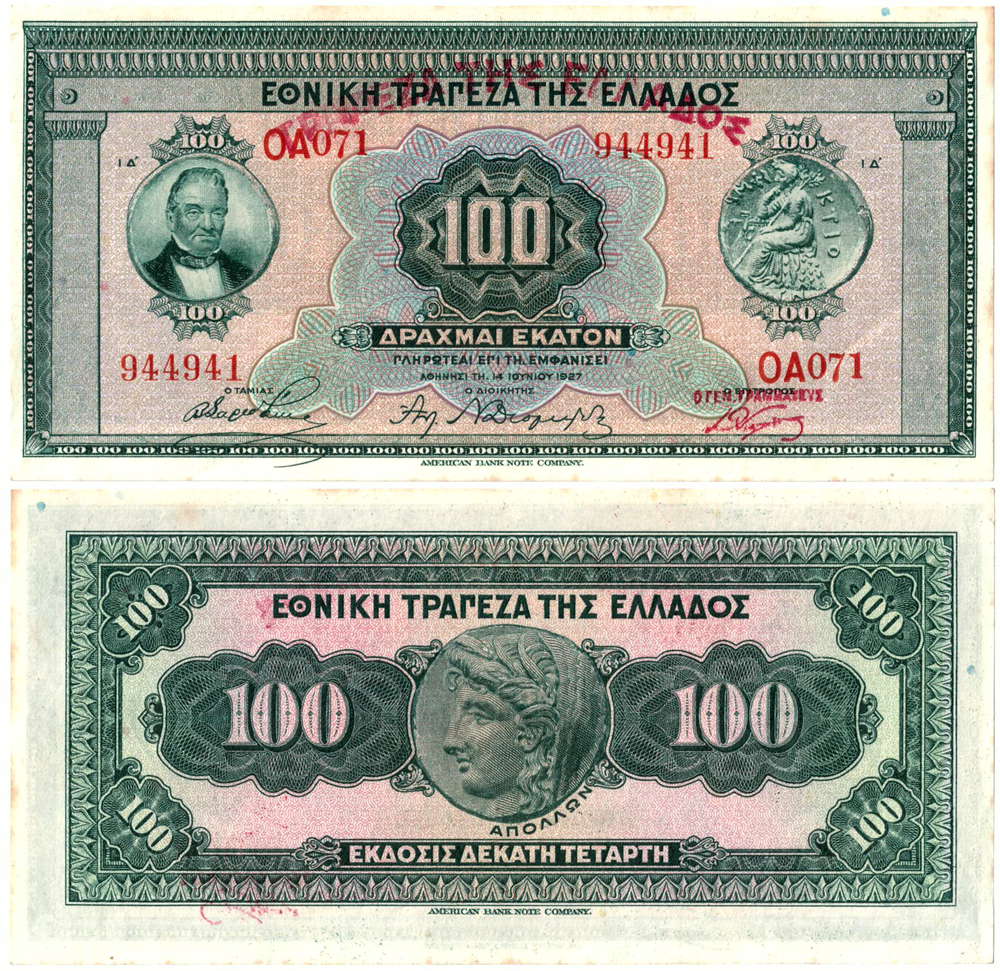
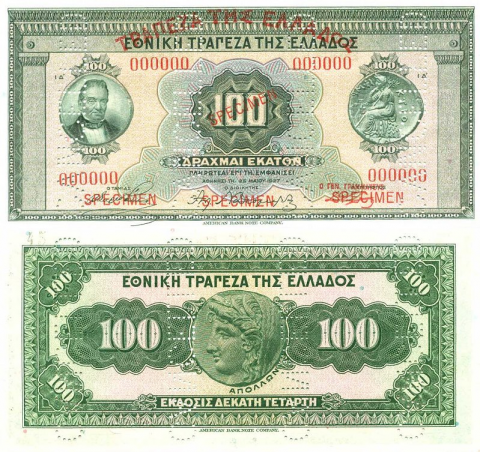
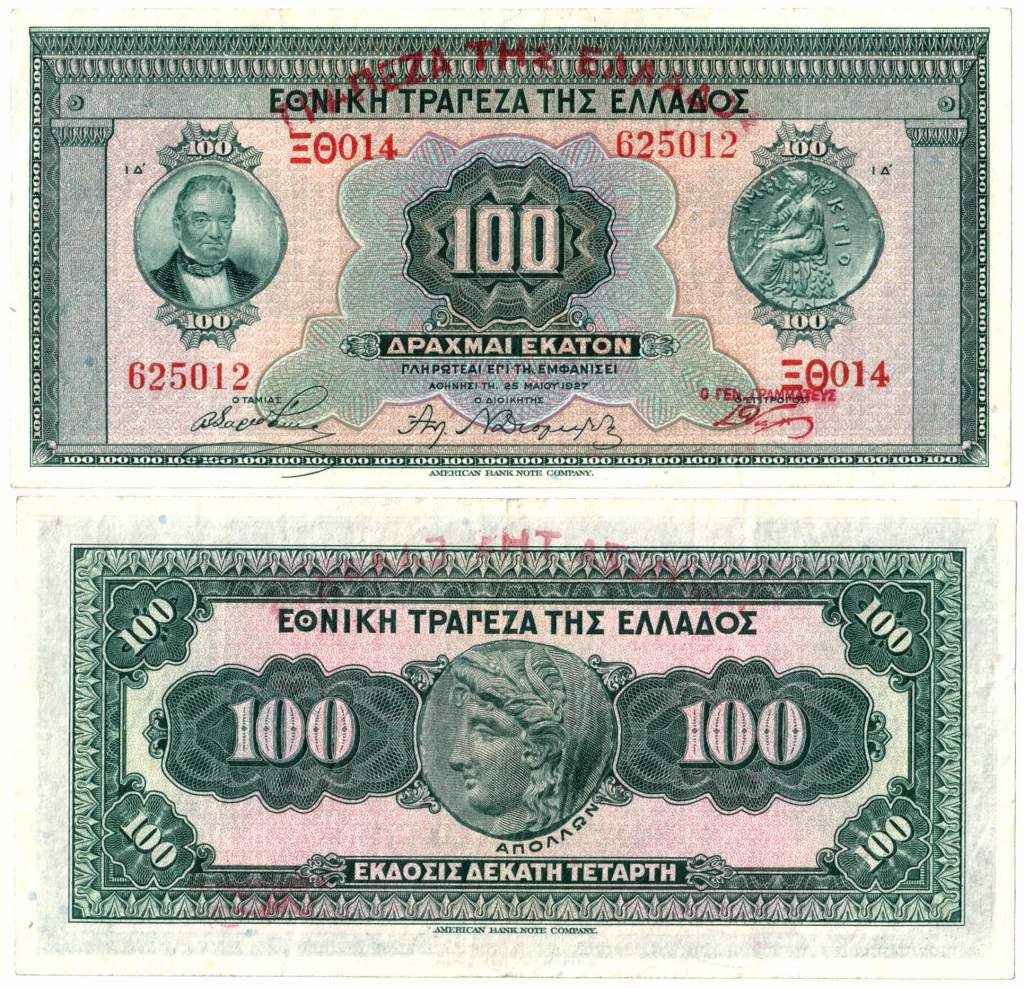
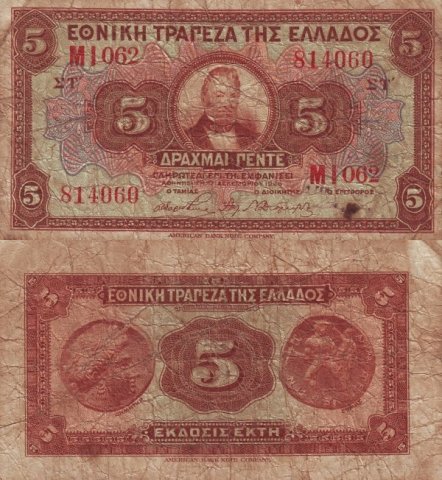

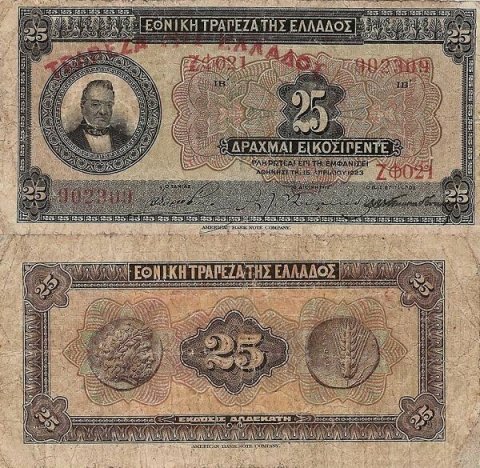
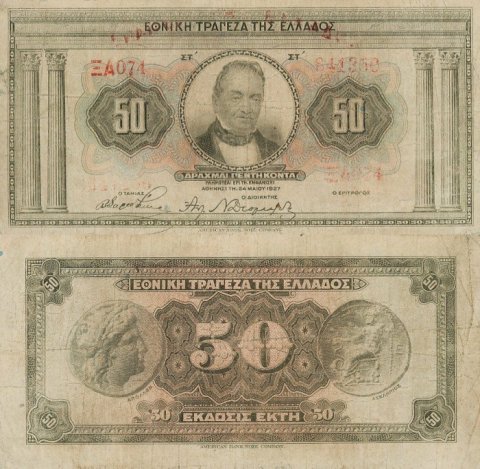
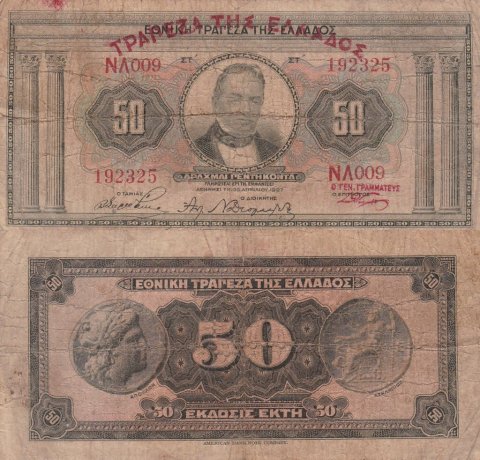


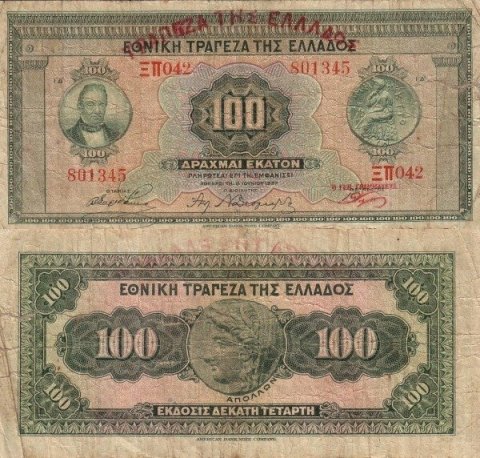

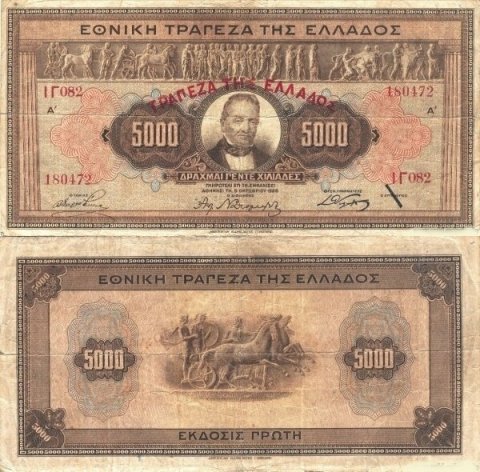
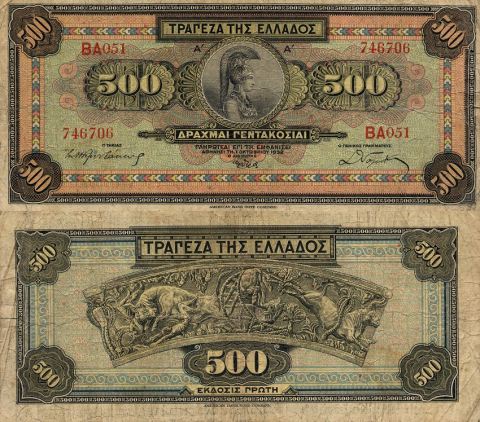
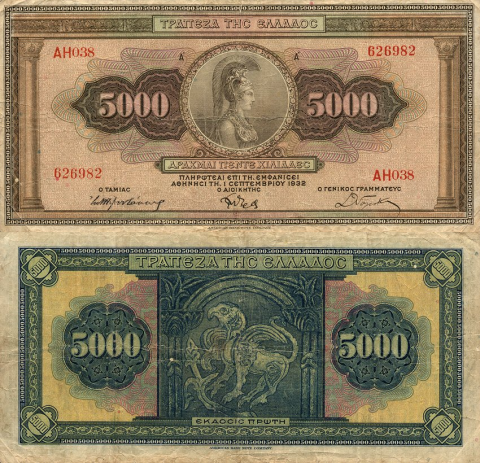
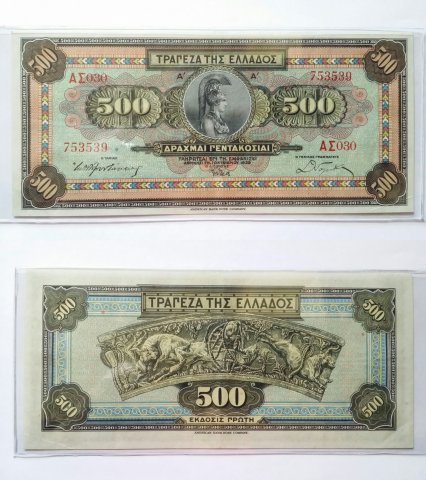
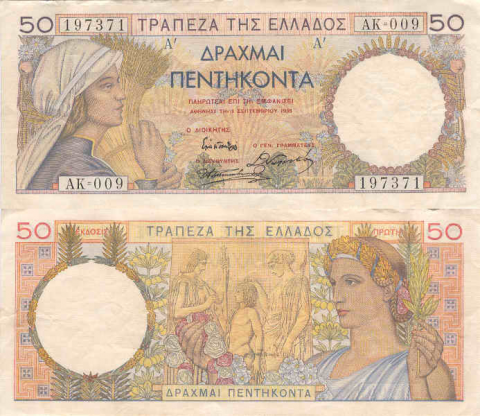
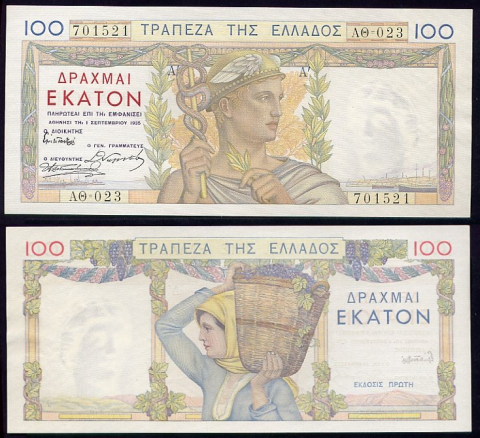
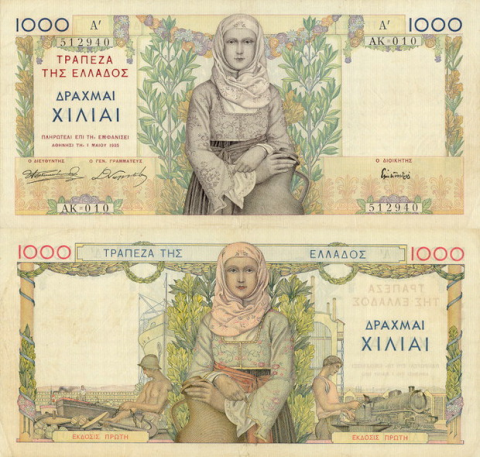
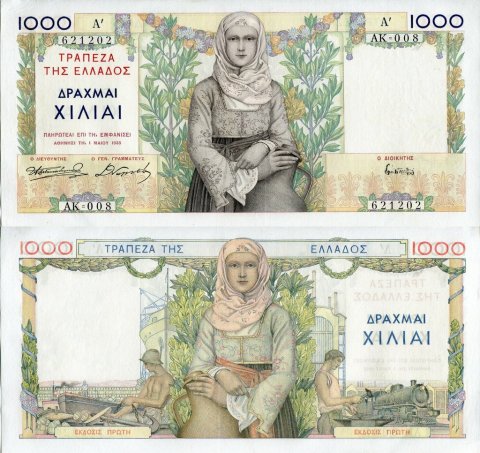




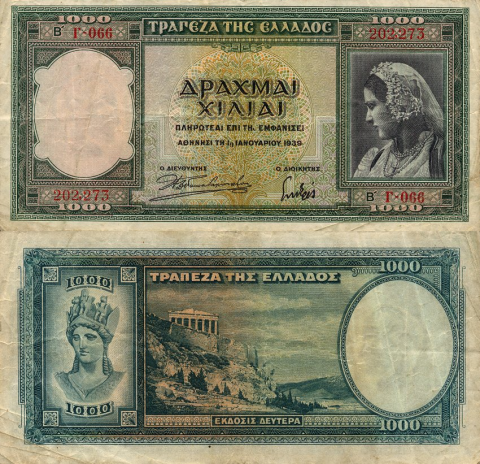
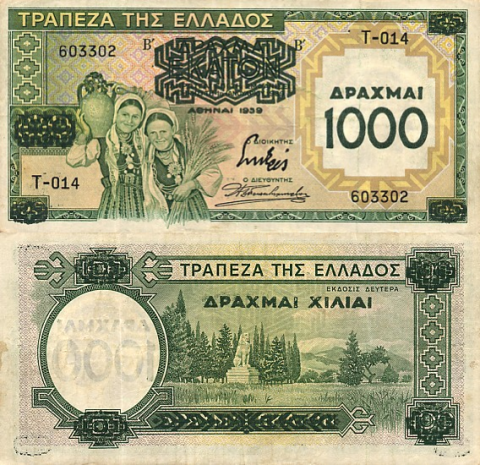



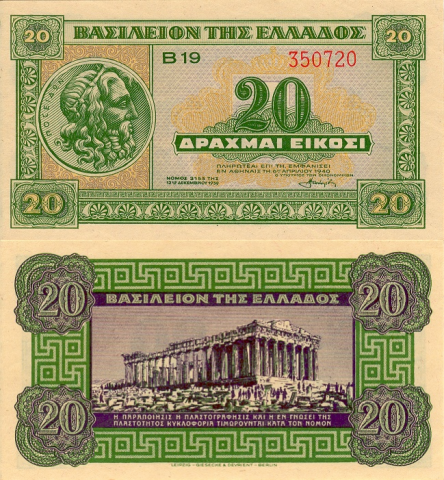
These Banknotes were issued by the Italian occupation forces in WW2 , notice the reference to antiquity as the bond between Italians and Greeks, but also who can dispute the elegance of the depictions.
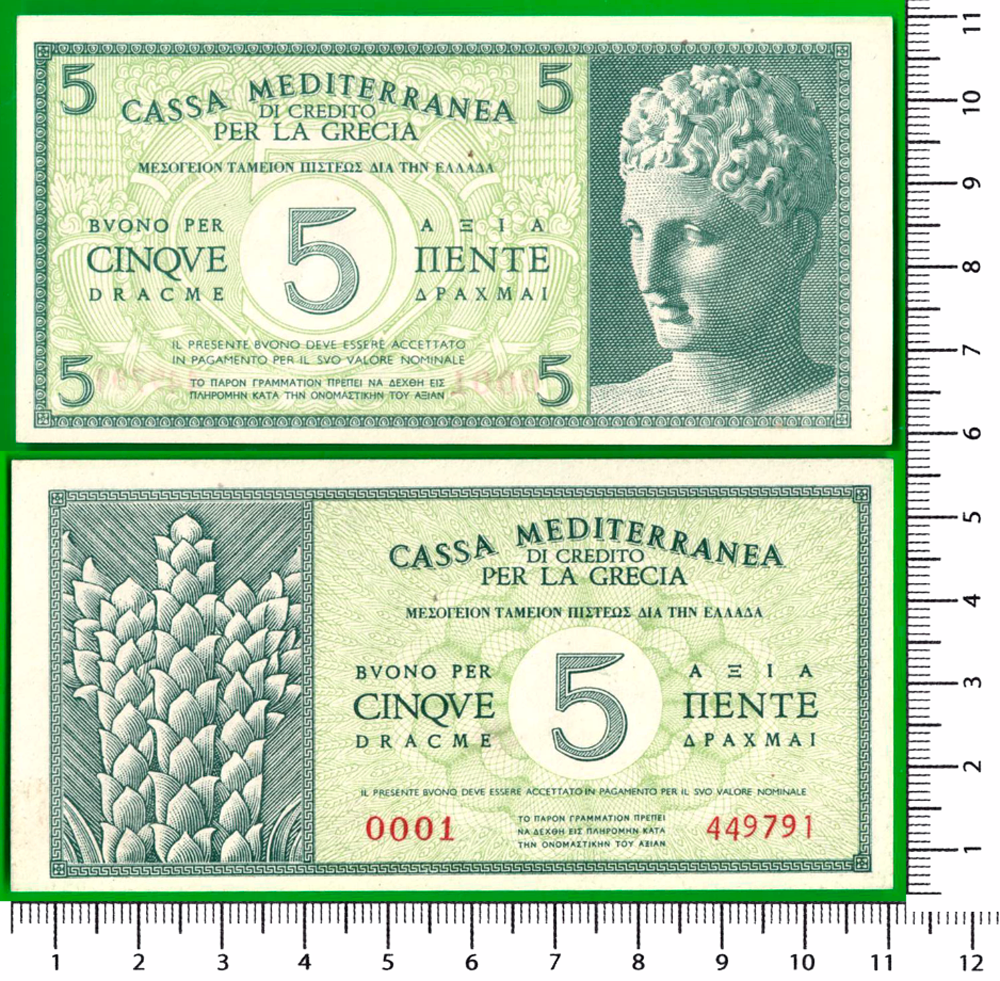
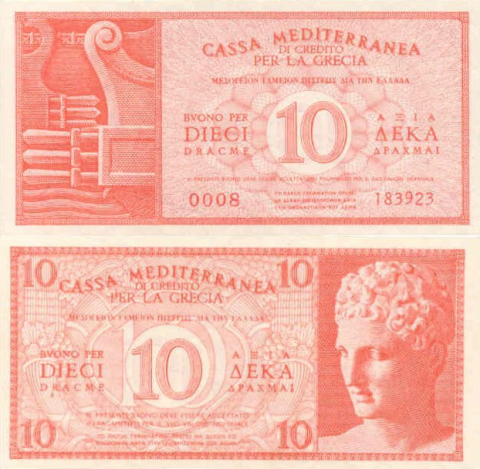

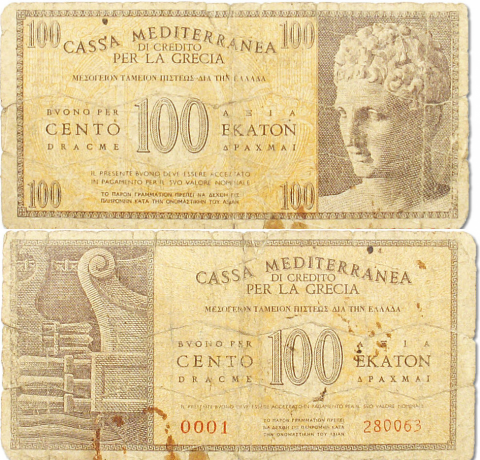
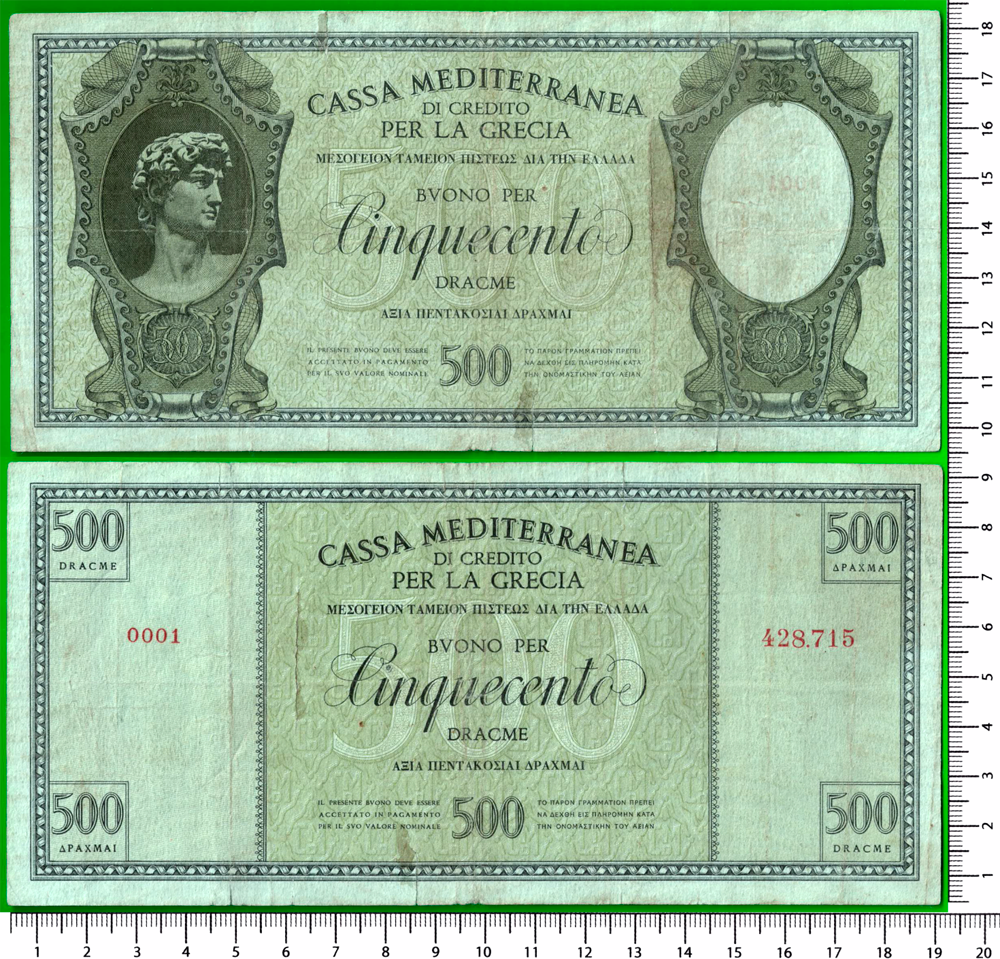
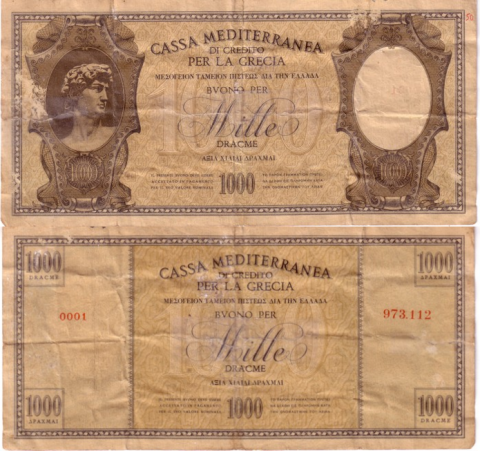
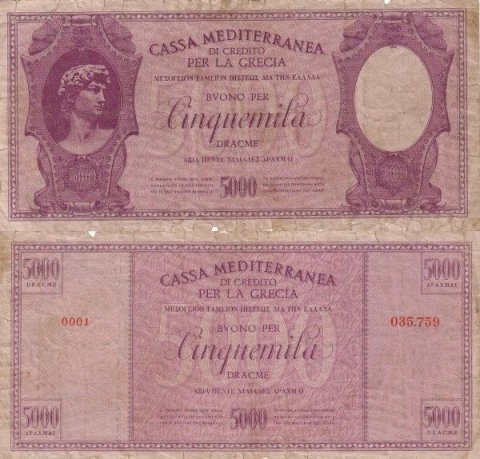

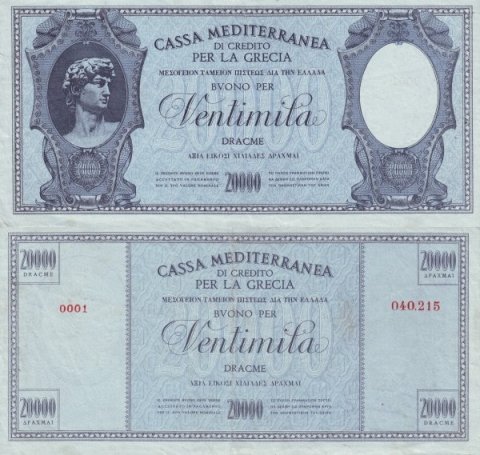
These Banknotes were issued by the Italian occupation forces in WW2 for use in ionian Islands.


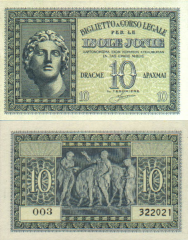
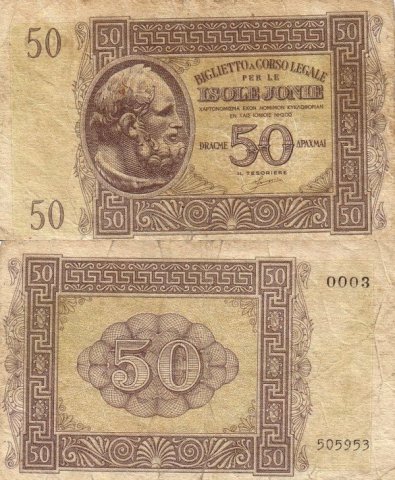


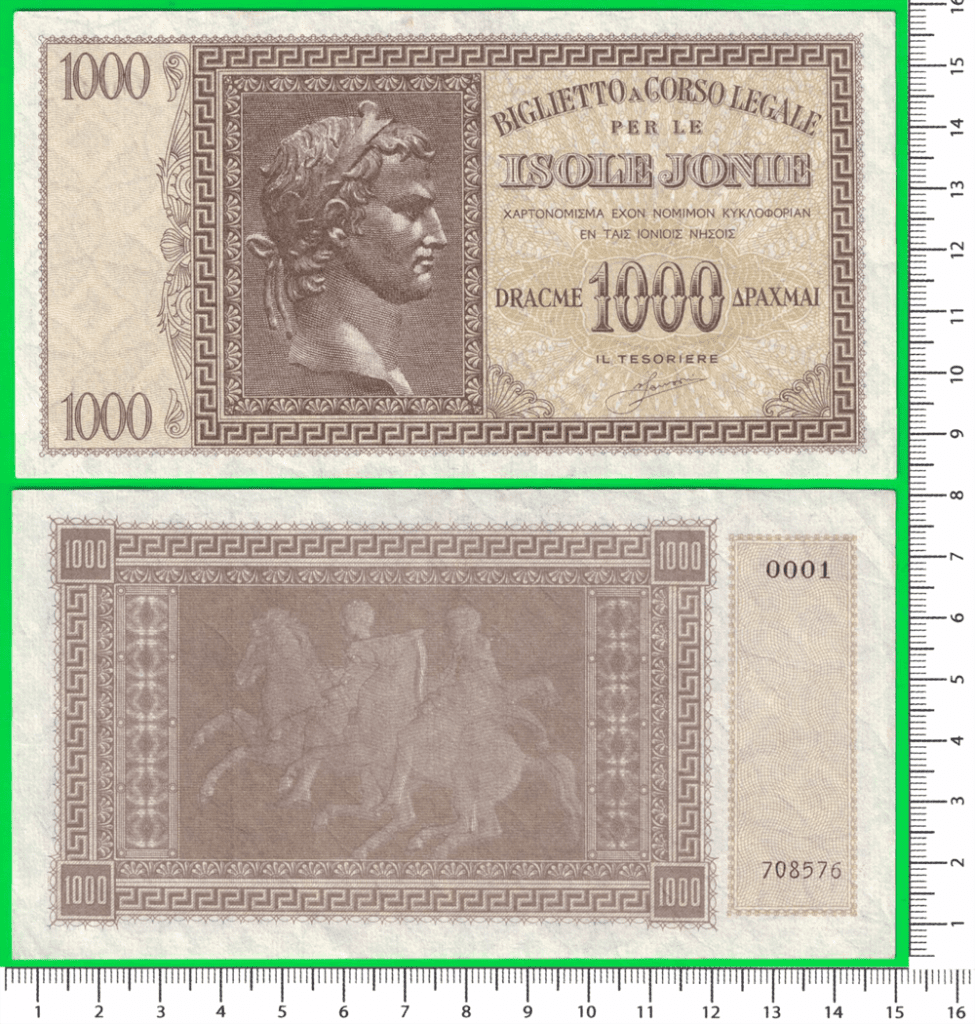

This is not a drachma banknote, it circulated in Greece in 1944 , these state that they are not for public payment method only valid within the German armed forces, an interesting concept in that they were decoupled from German money supply and received value from the local resources the army occupied, when stamped by the greek administration were used as money in Greece, a monetary ‘half way house’
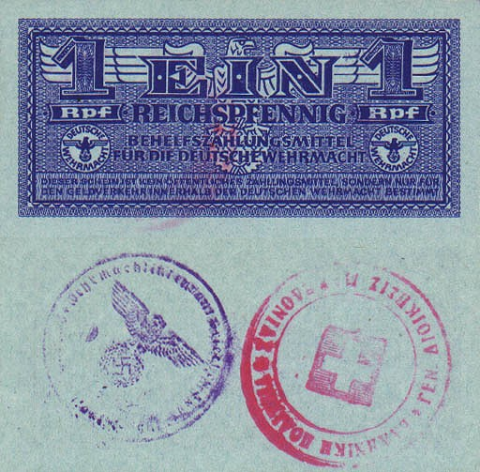
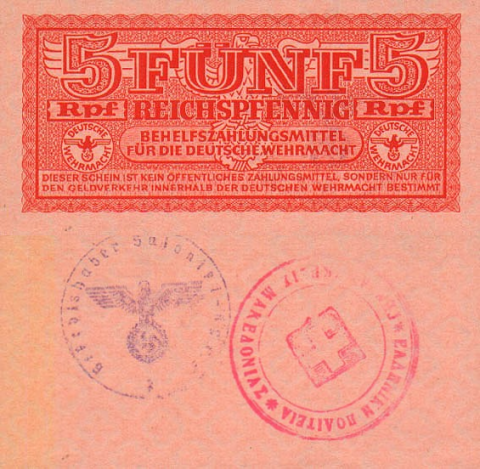
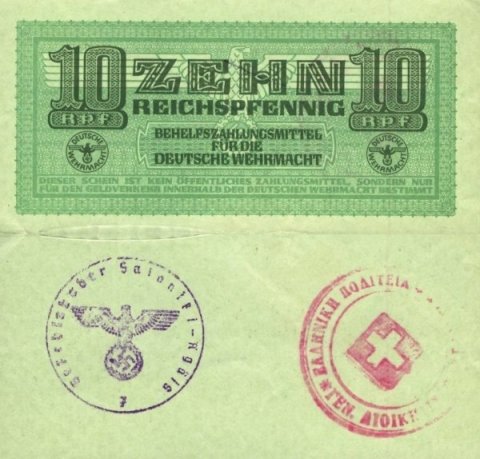
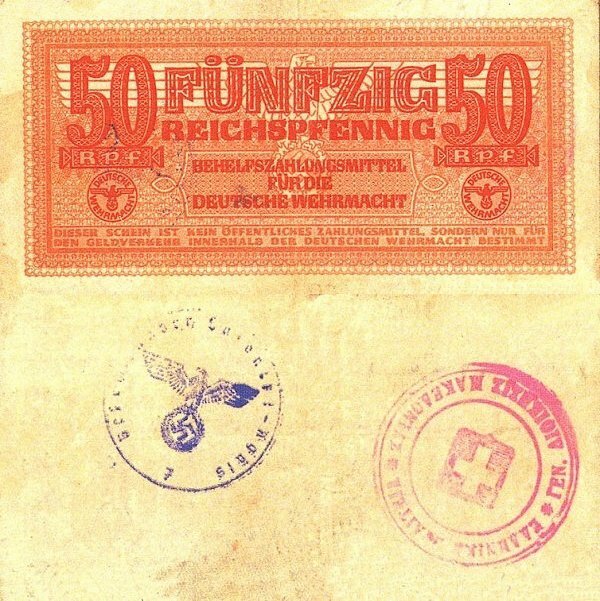


This section covers the WW2 period with increasingly cheaper paper and inflationary issues, in 1943 the drachma devaluation was x 100, 5.000dr became 500.000, then in 1944 there was another 100x devaluation 500.00dr became 500.000.000 🙂 creeping up by yet another 100x devaluation, joy! everyone was a multibillionaire (time to repay drachma denominated debt, let em keep the change big man… :), by the end of the year devaluations were reversed.
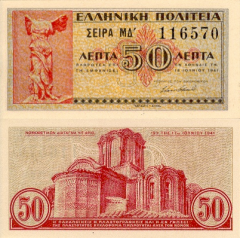
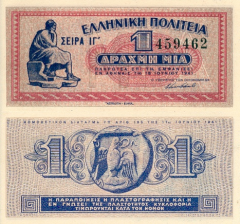
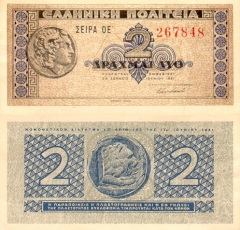
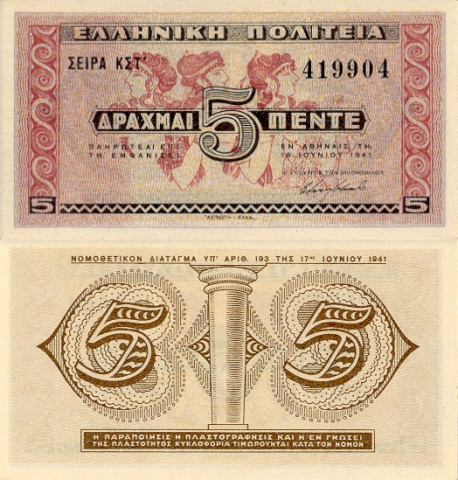
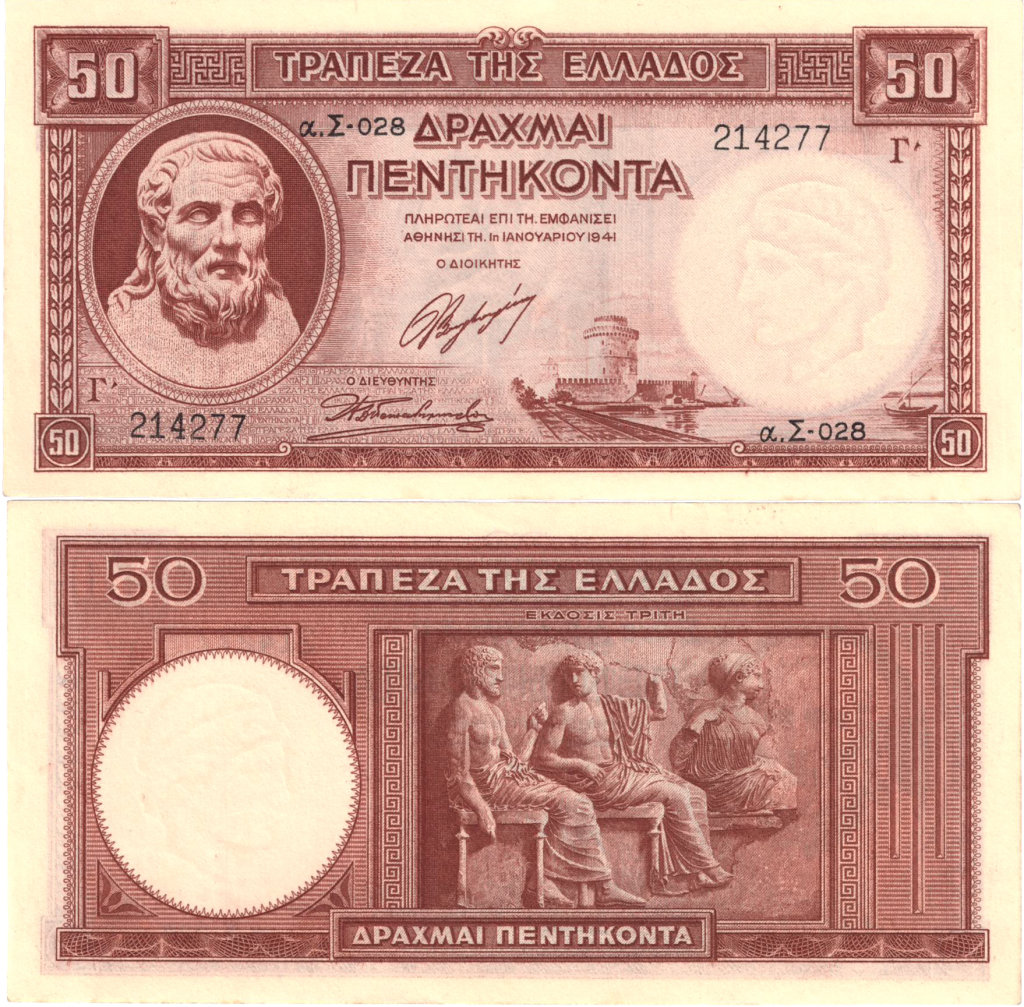
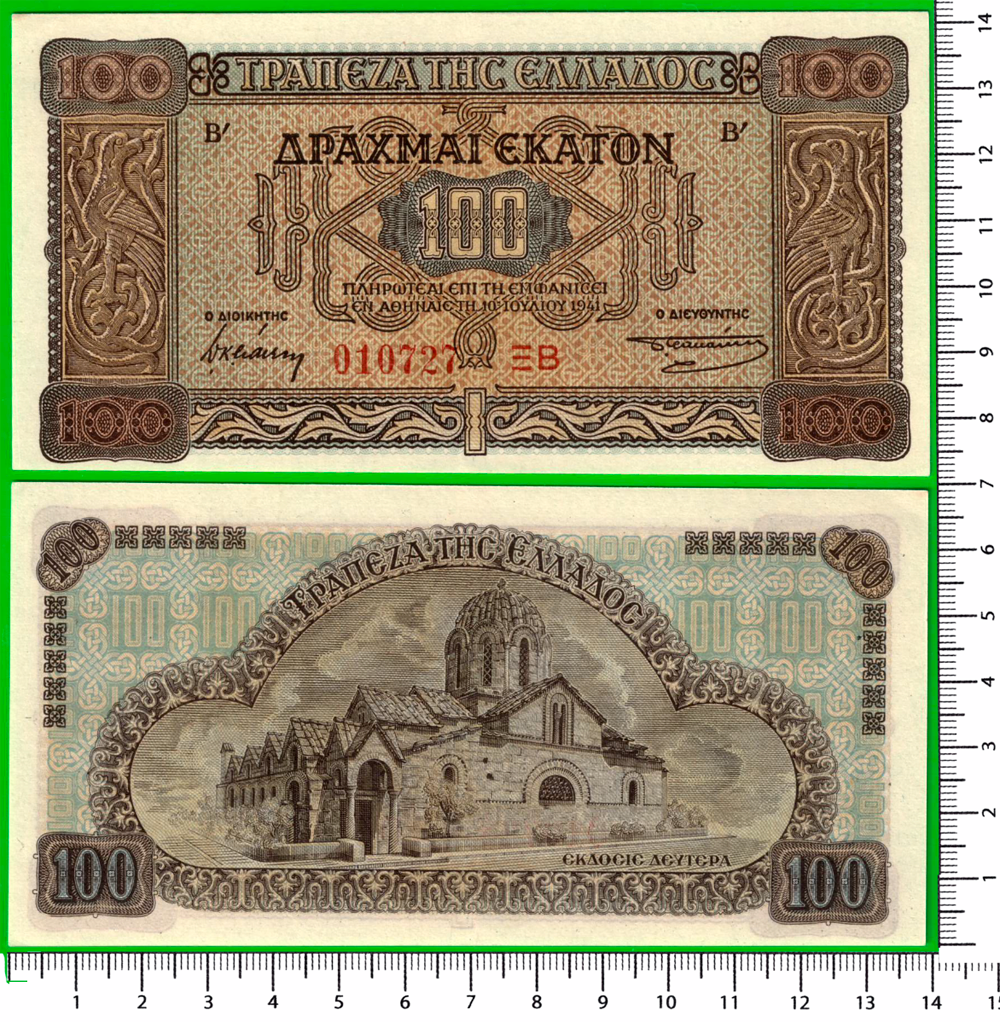

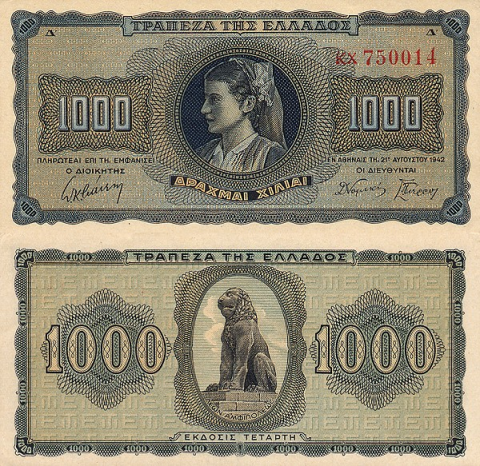
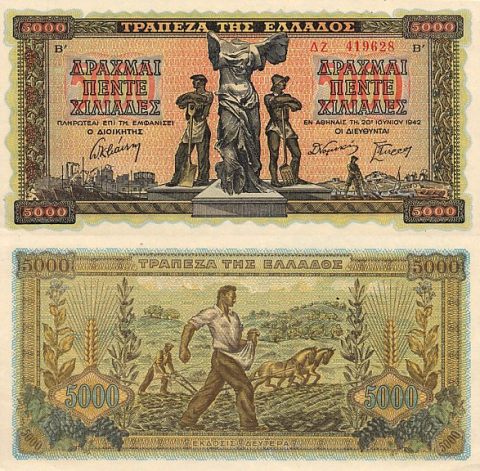
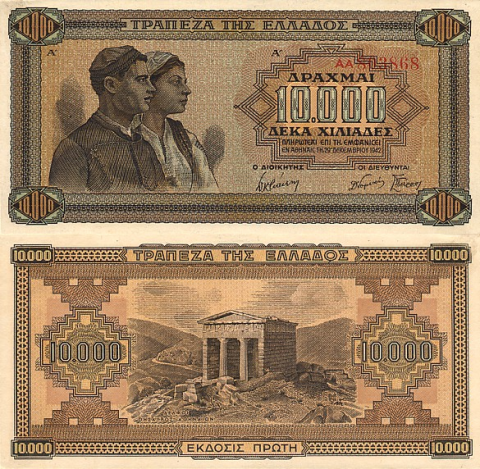

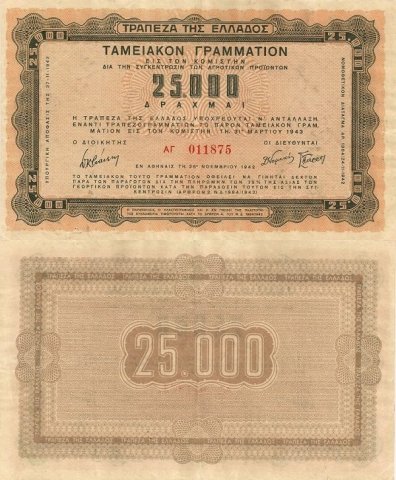
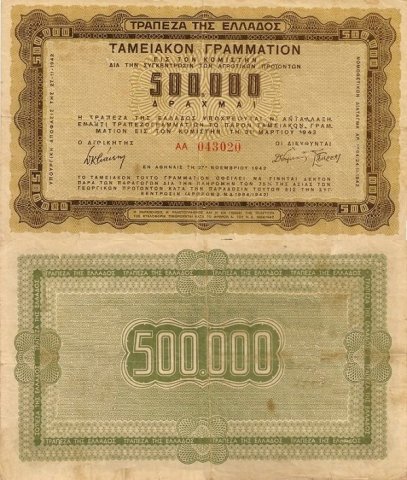

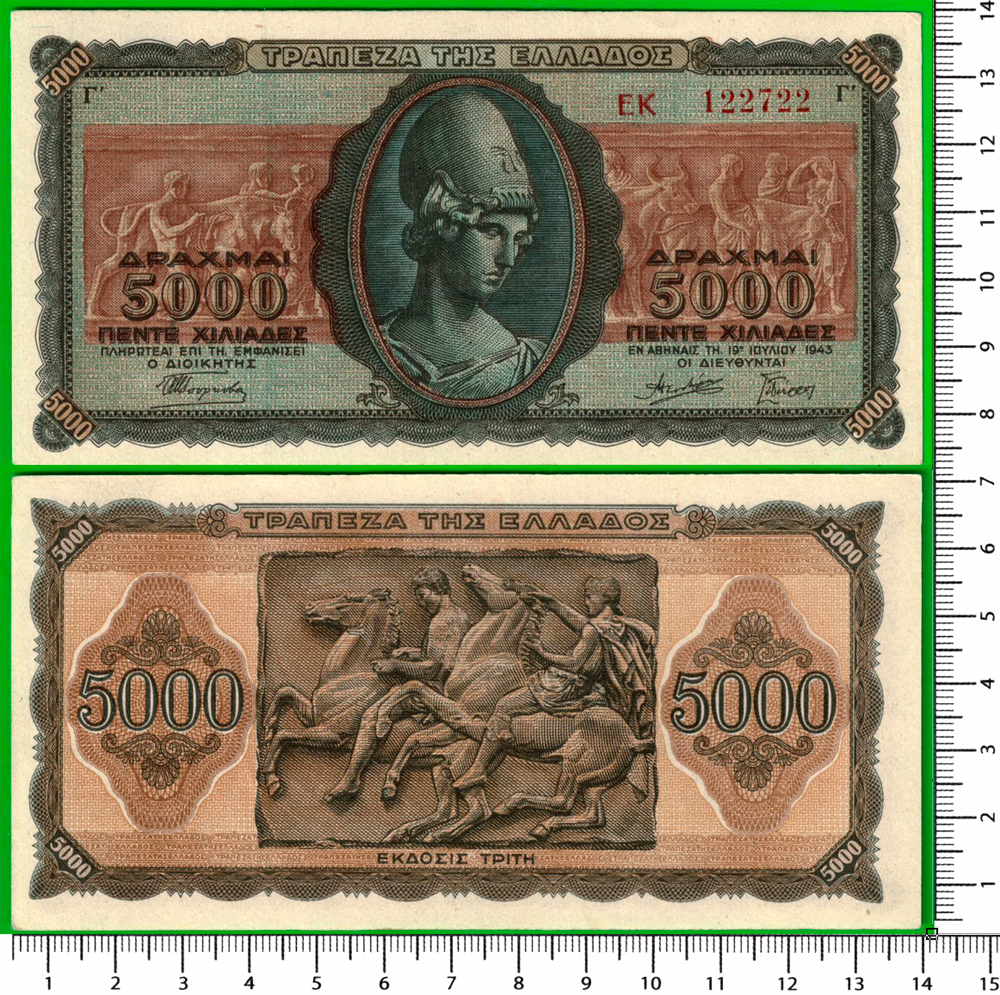

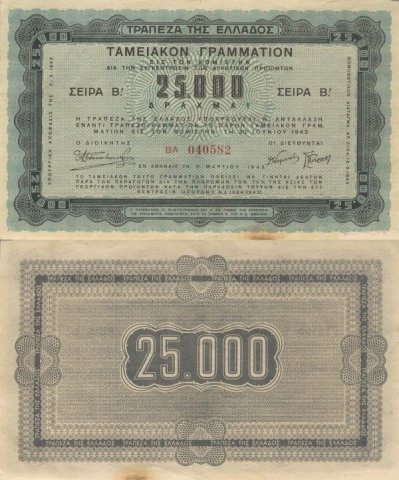
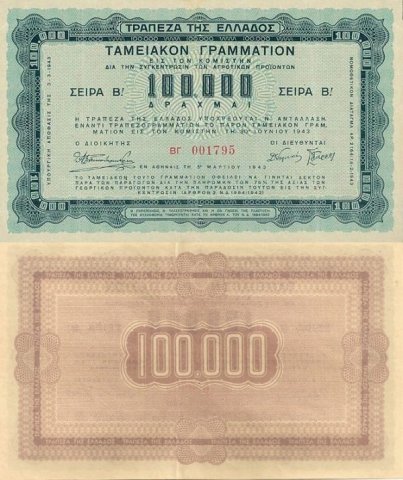
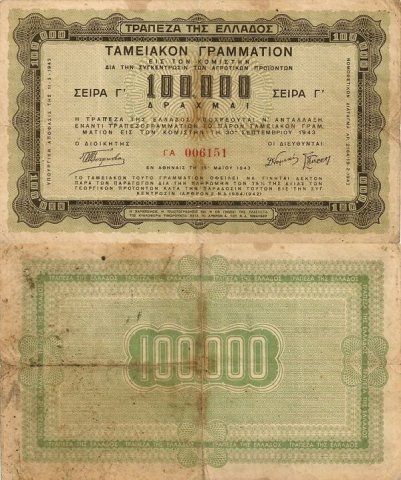
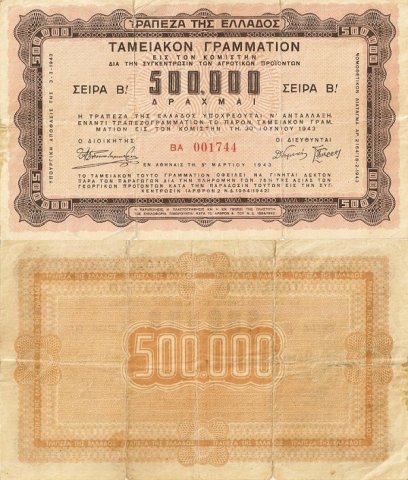



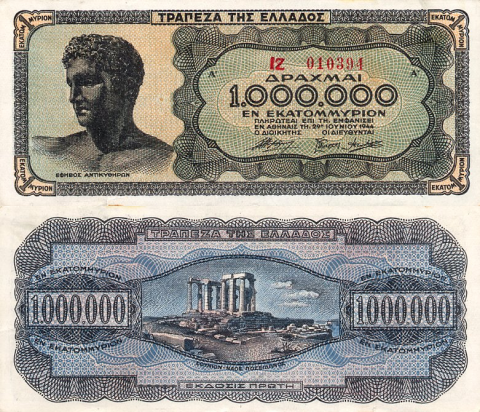
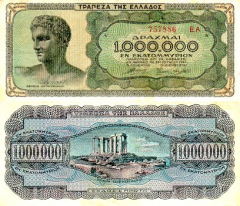

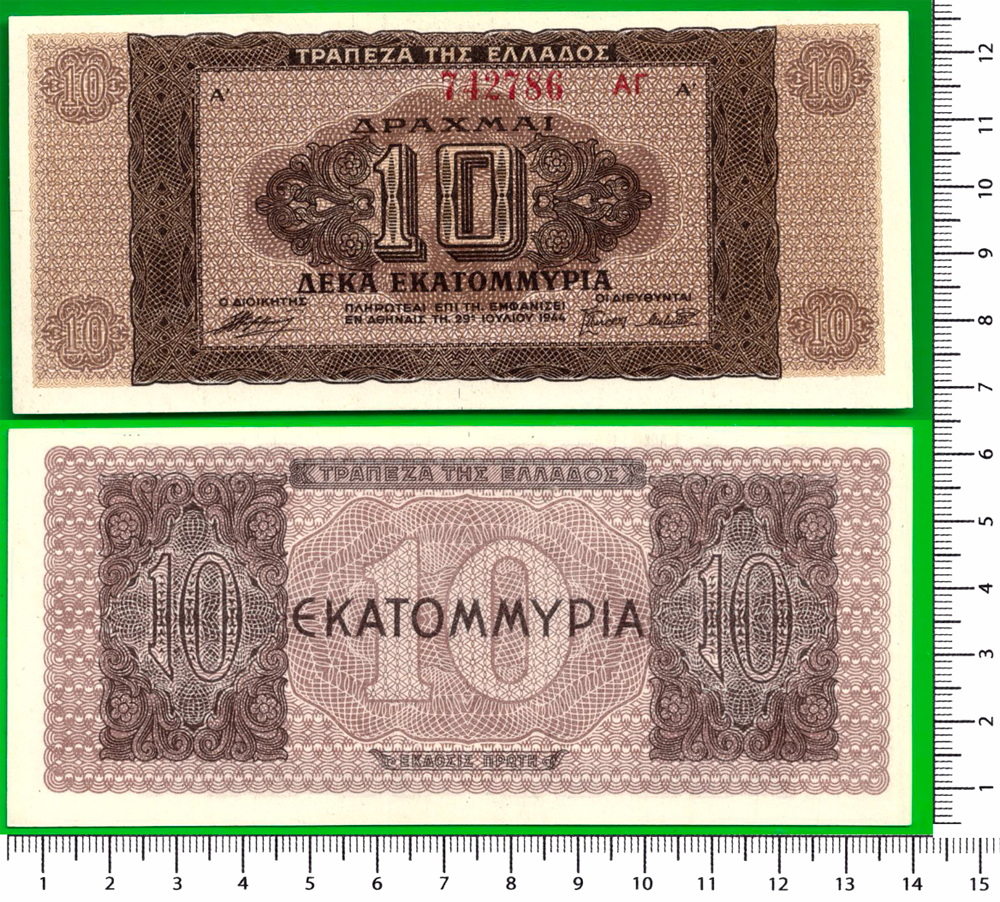
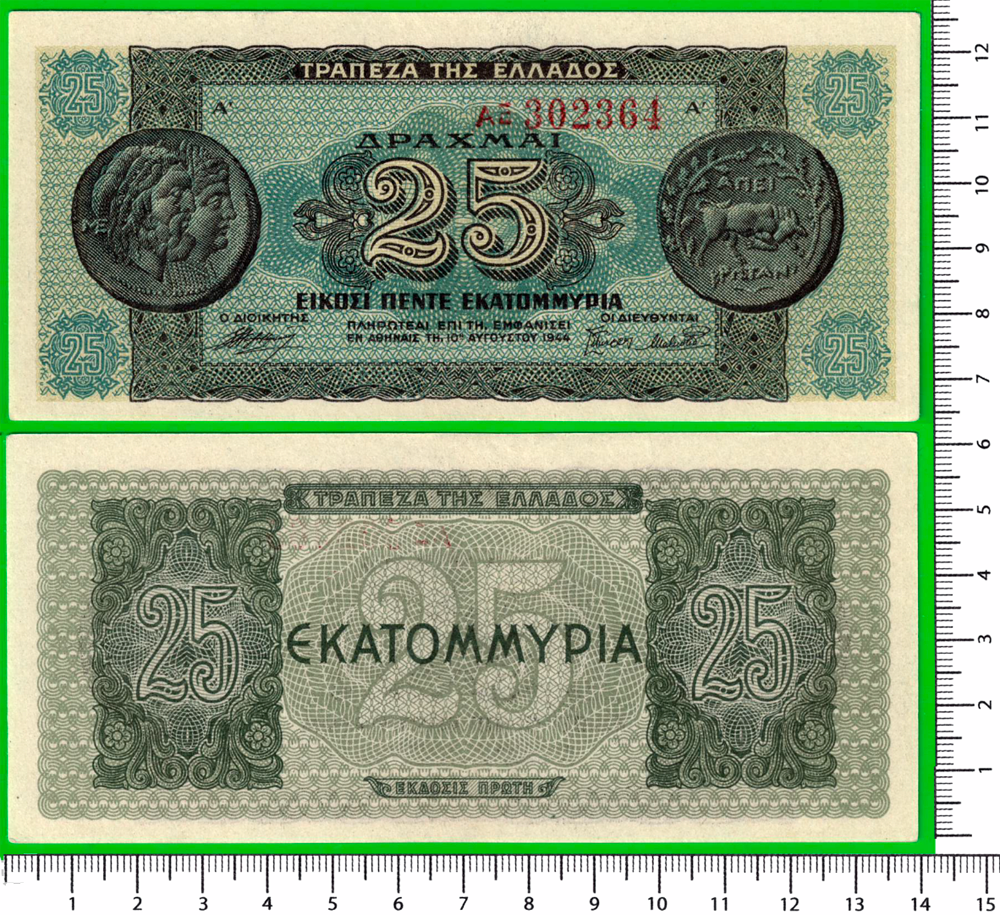

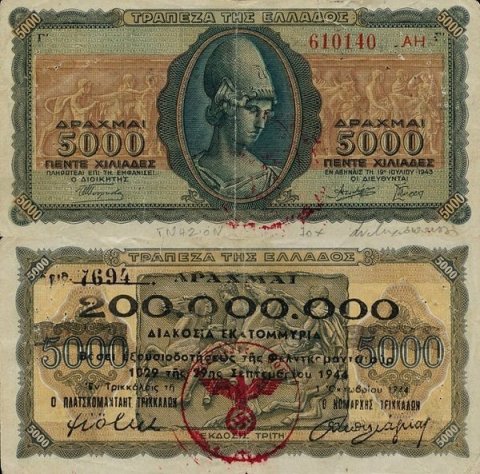
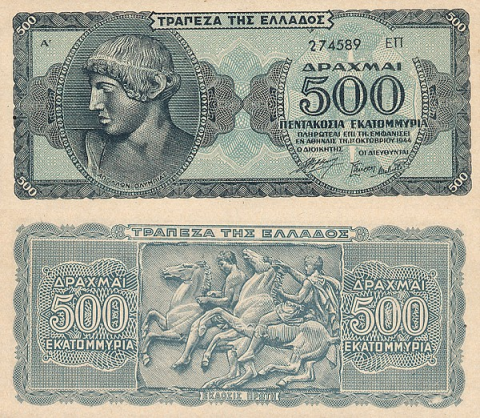
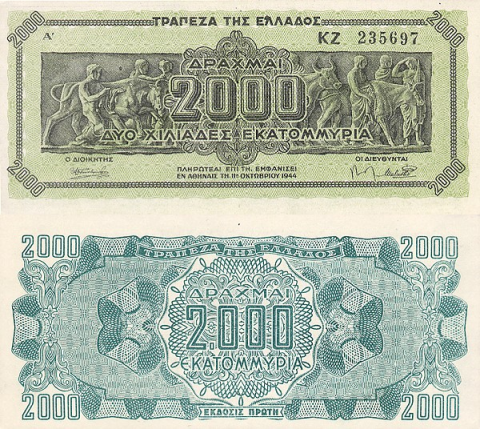
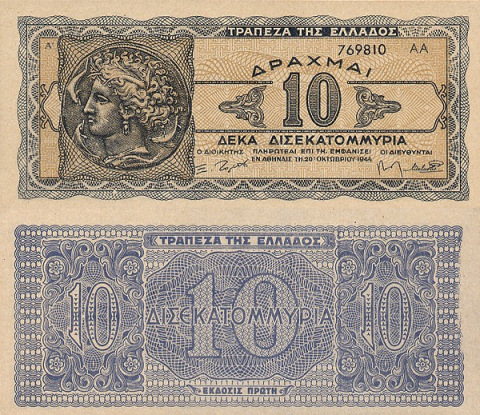
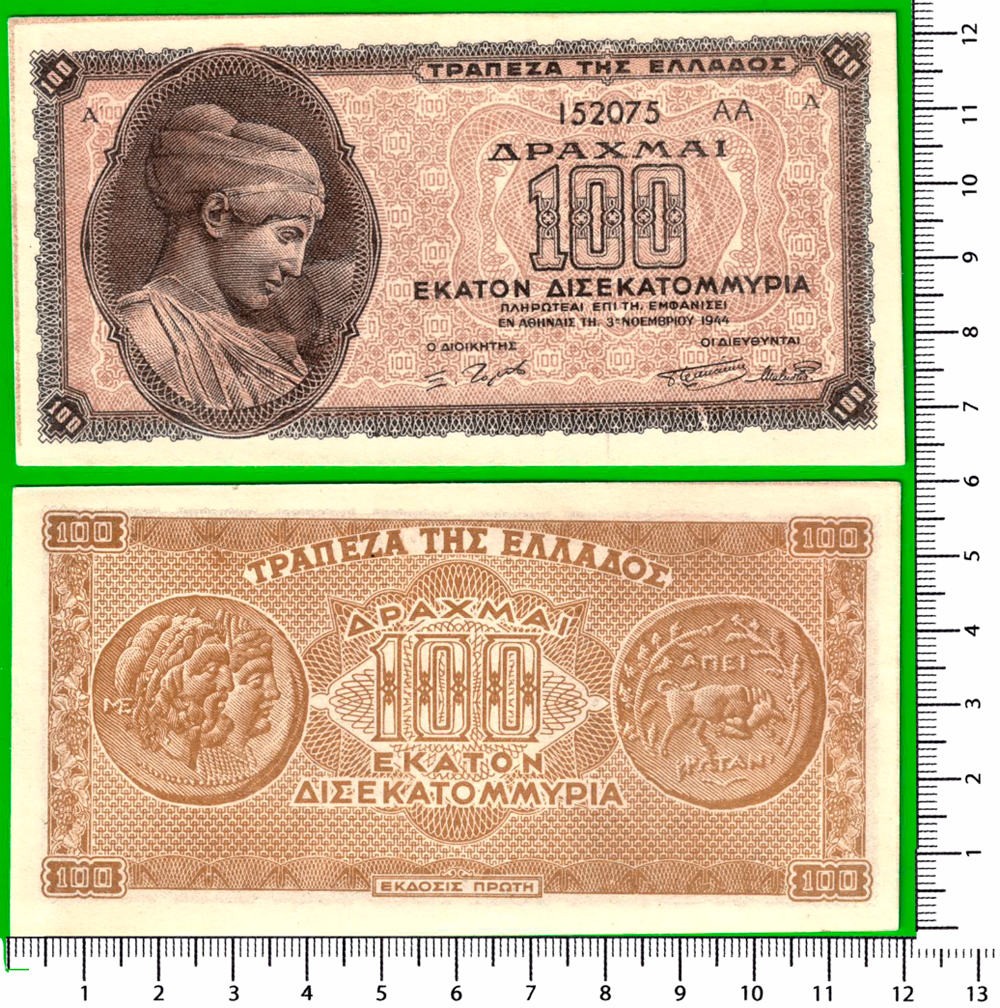
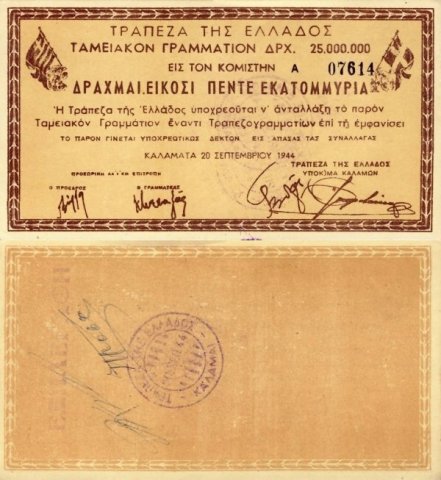
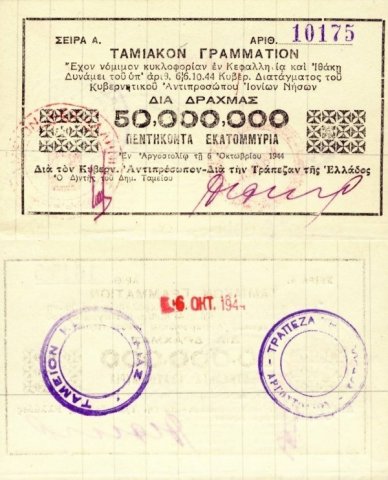

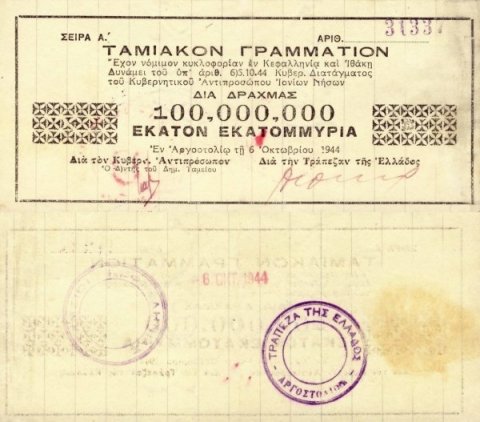
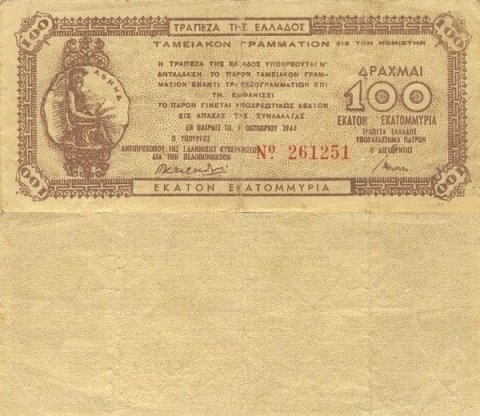

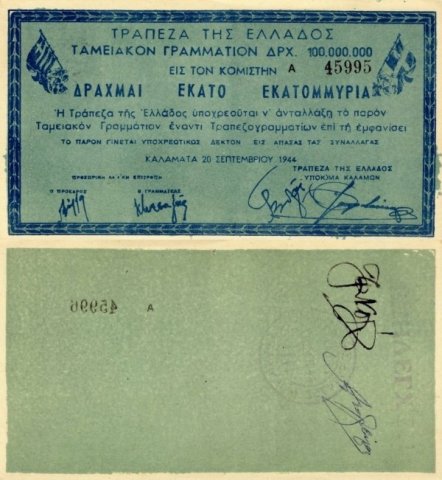

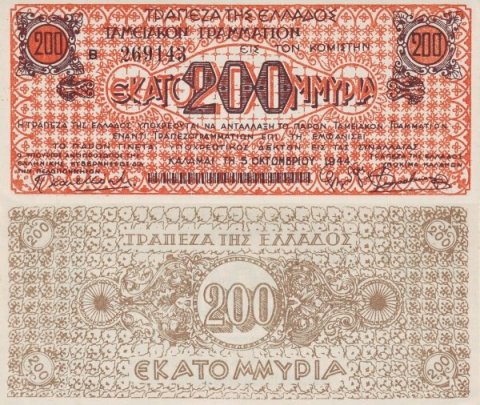
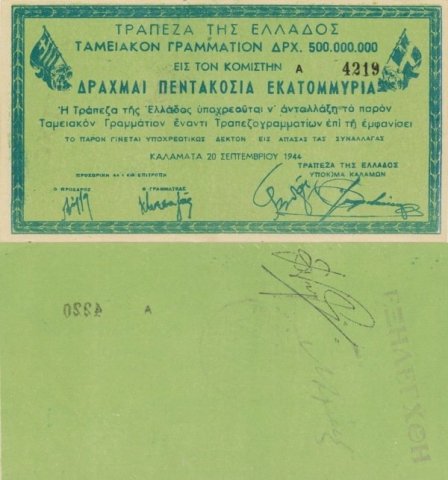



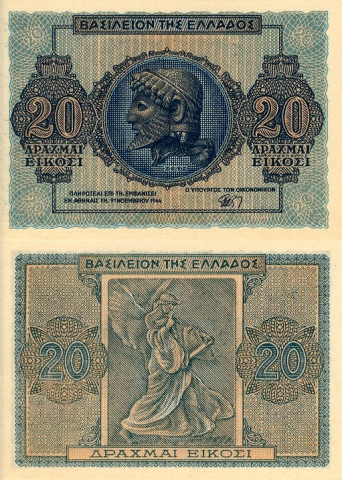
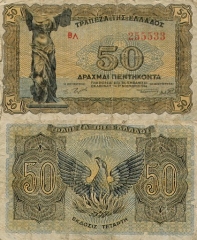

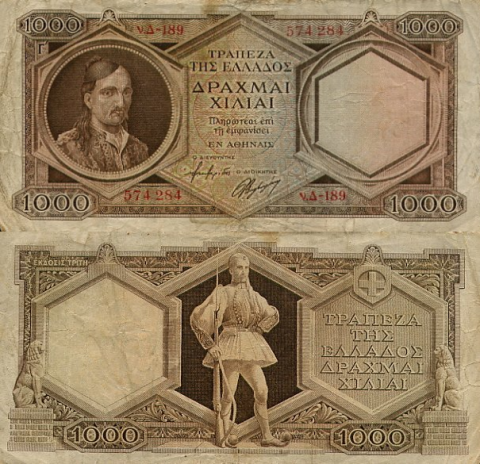

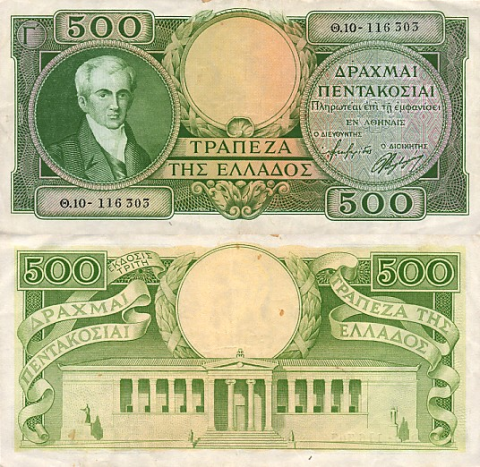
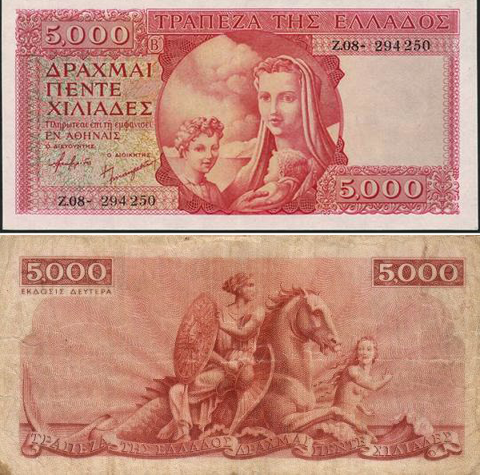

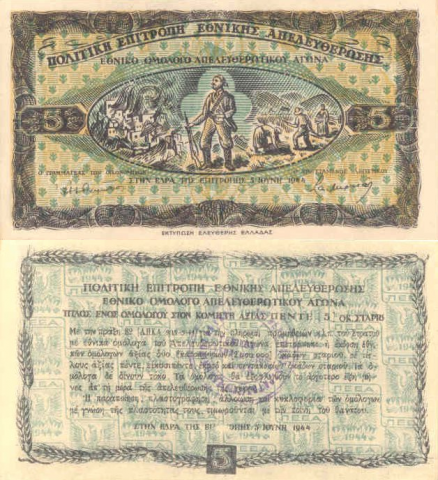
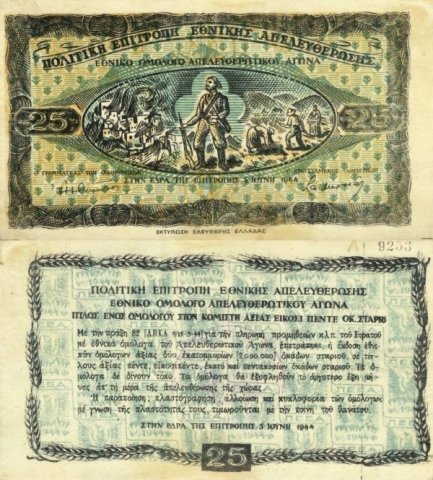

Following WW2 there was civil war in Greece (beginnings of cold war between west and communist states) .
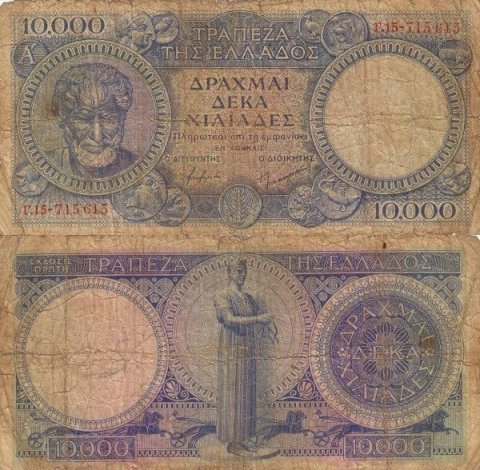


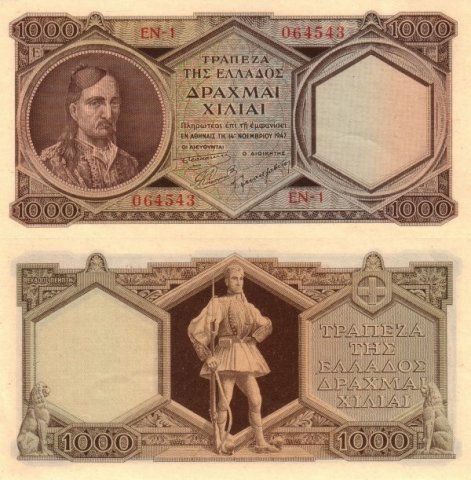

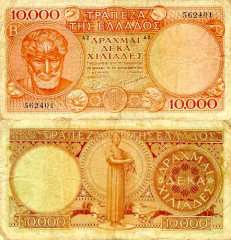
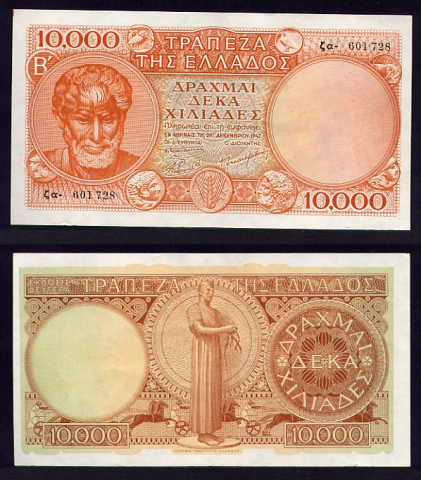



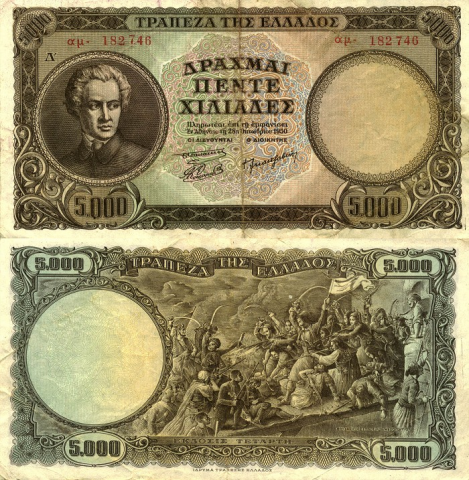
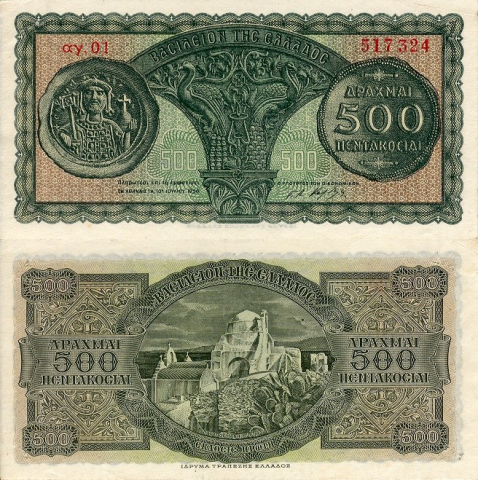
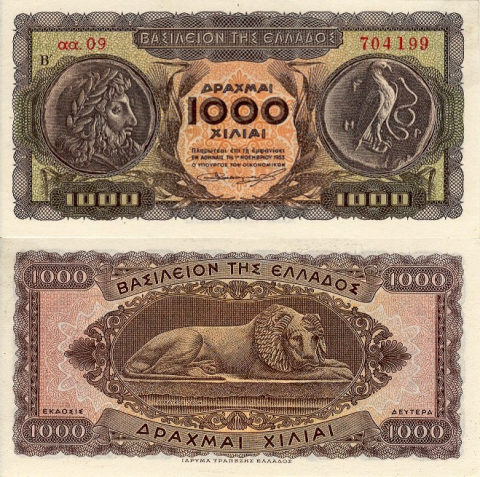
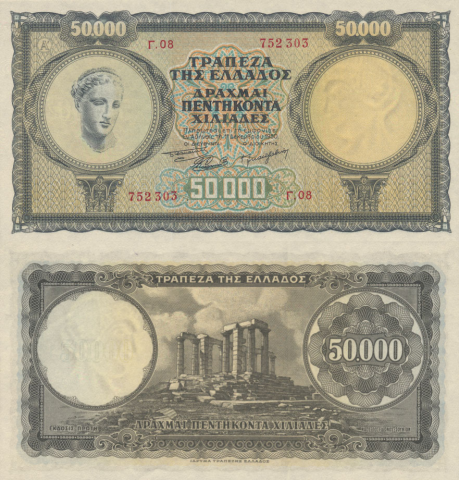
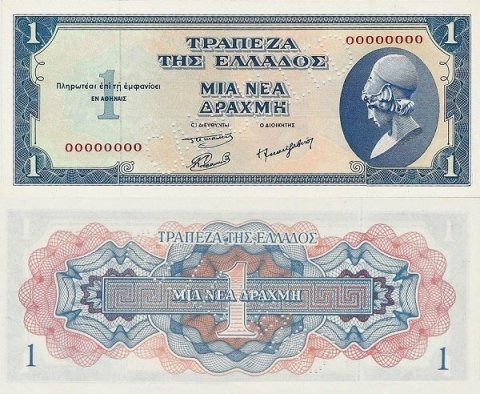





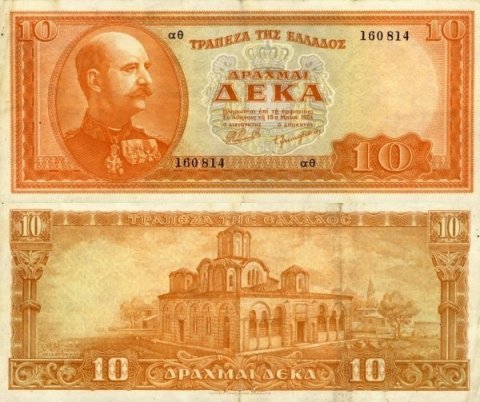

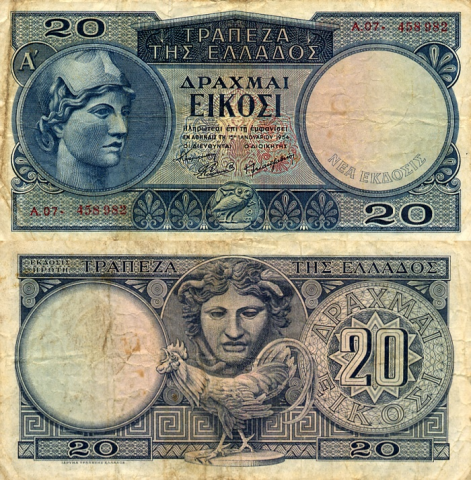
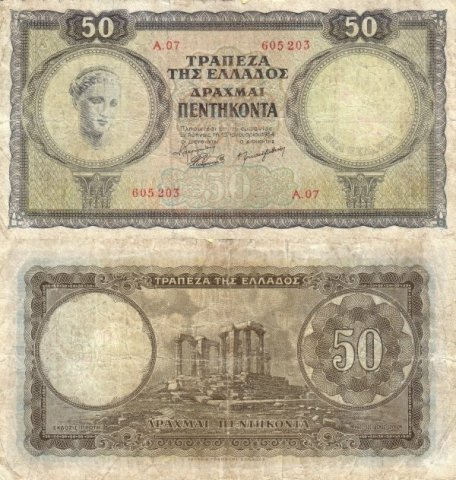
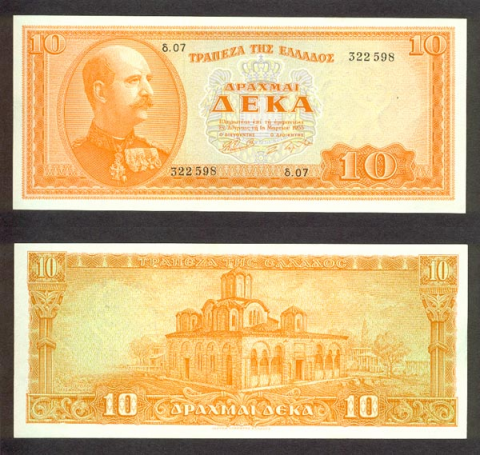
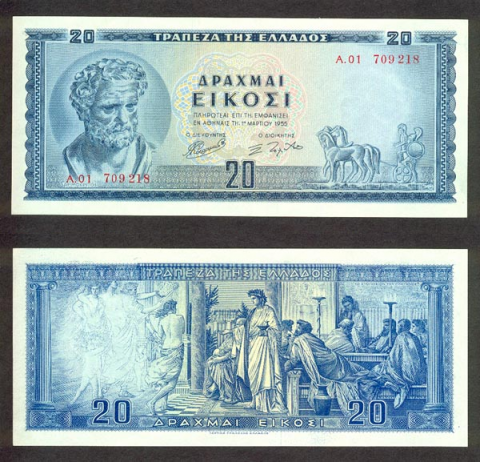
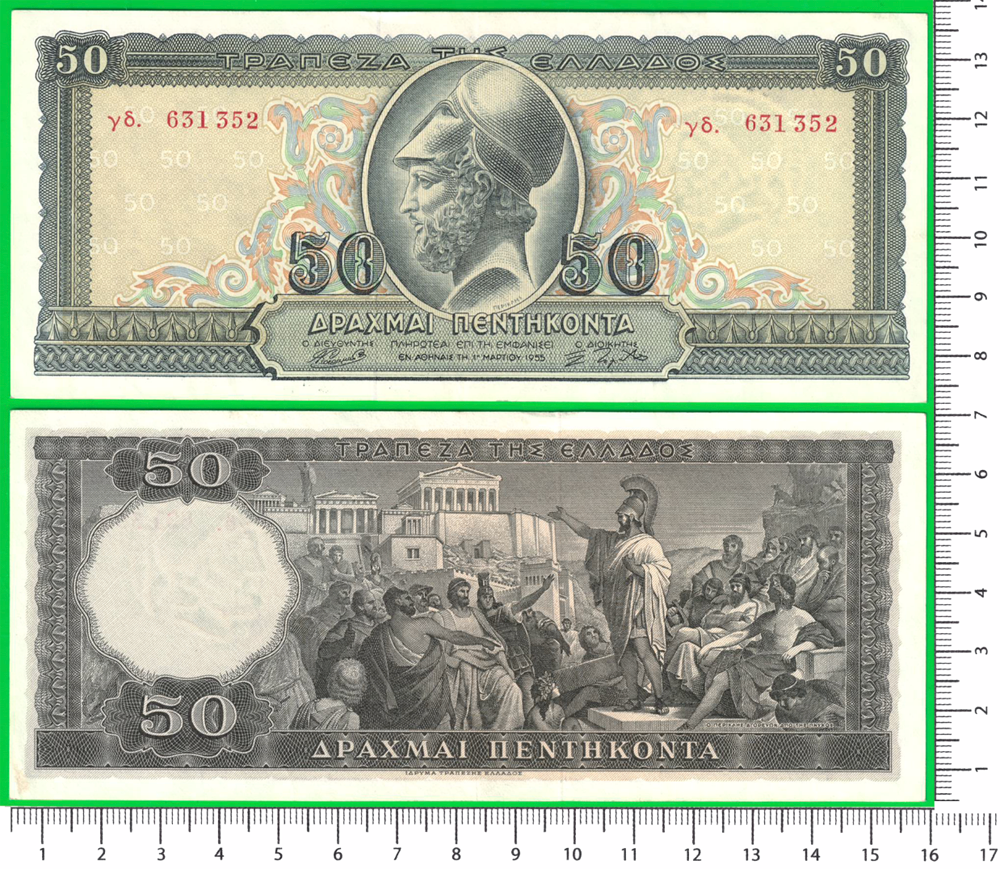
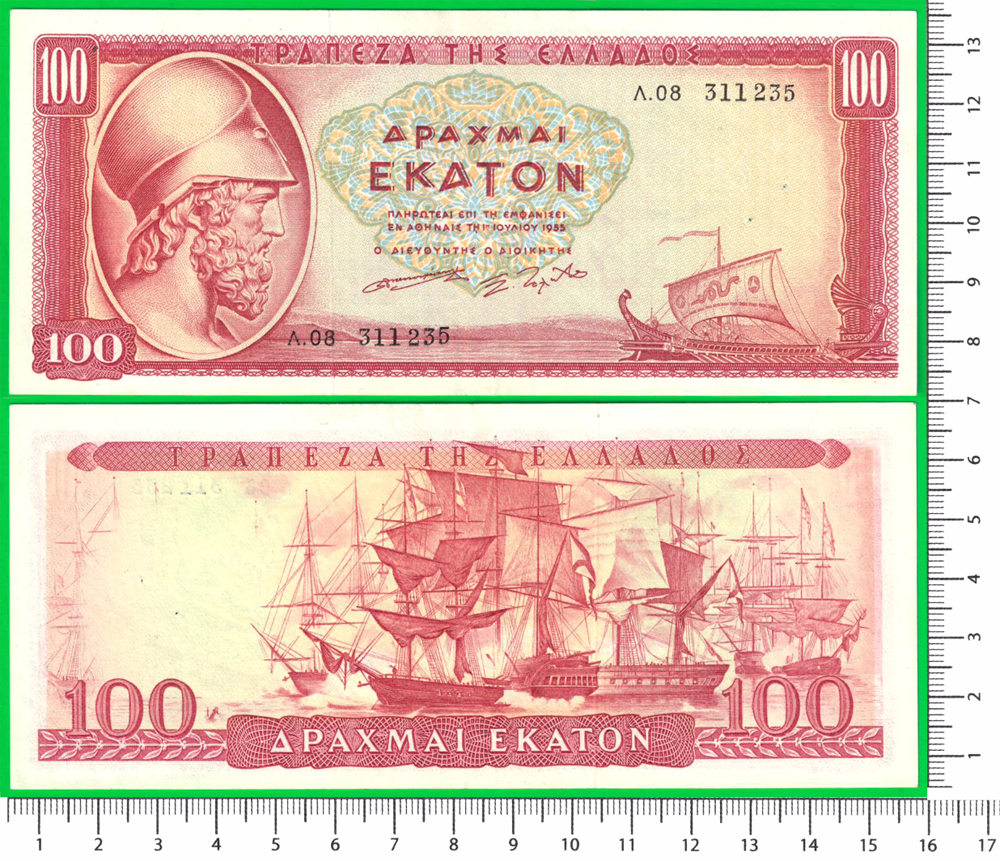
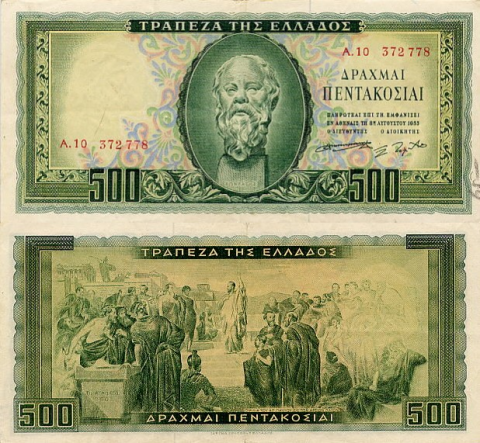




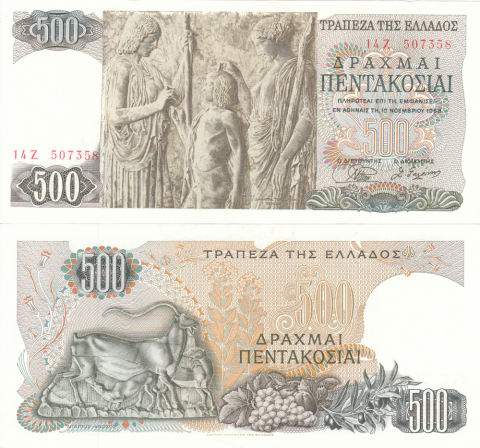
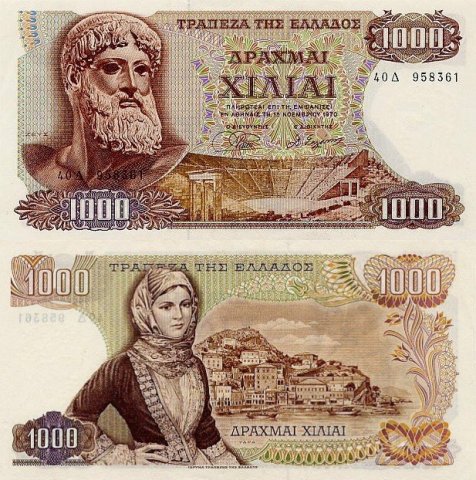



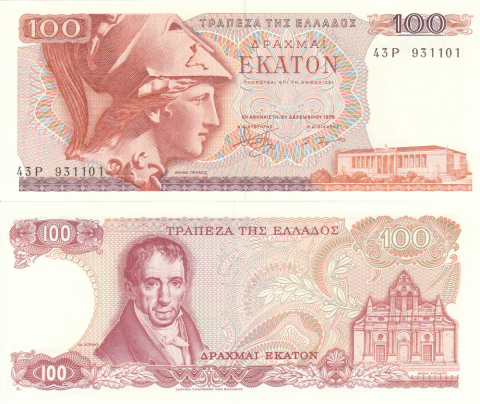
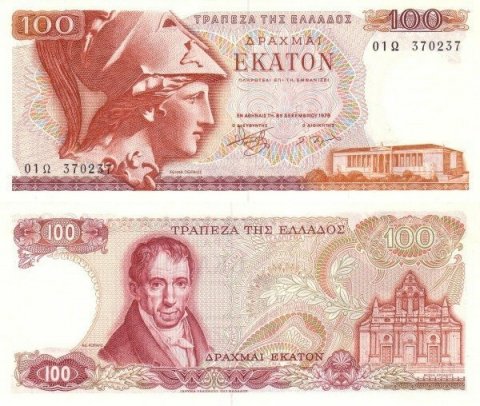
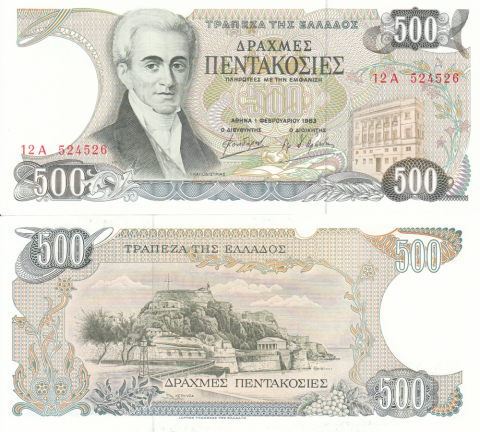
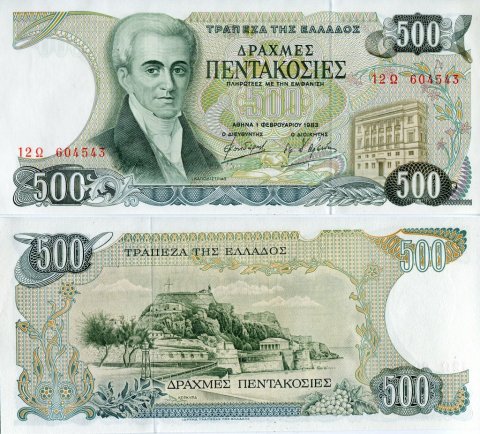
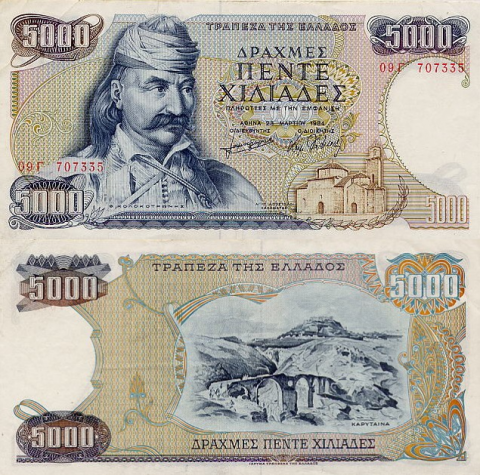
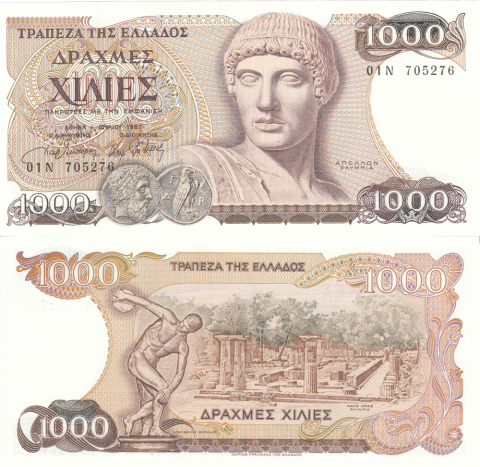

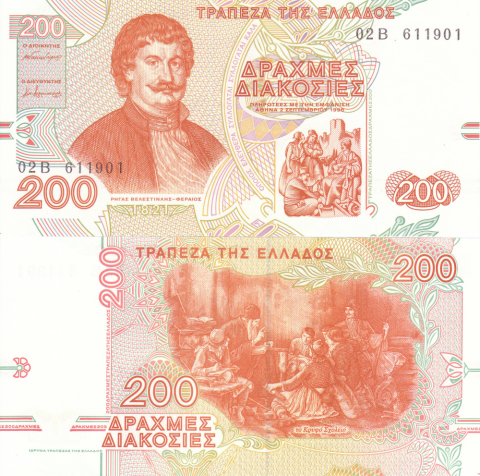

On 1 January 2002 the Drachma was replaced by the Euro which rests on very shaky foundations (2019) and is likely to be replaced itself in the not too distant future.
The end of this section of our Financial Art Collections
1847 to 1949 – 100 Years Brief Pictorial Memorial Synopsis.

Using Einstein’s General theory of relativity, let’s speed on the curvature of space-time and visit the past … to briefly examine 2 families: The Cohilla and the ‘Georgiou‘ families, both assimilated Jewish.

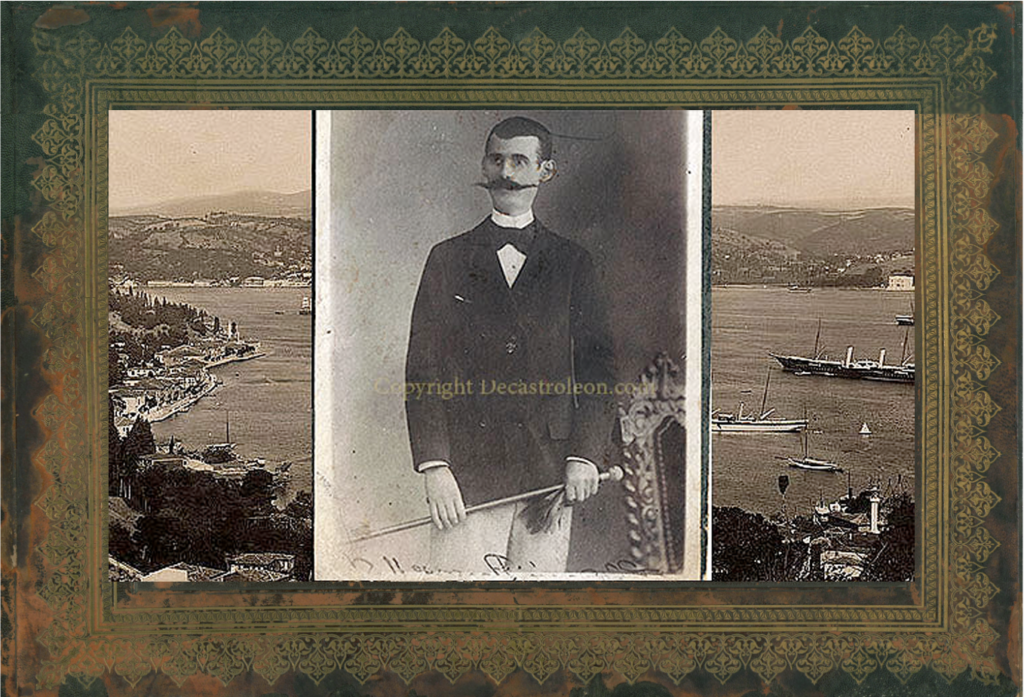
1) The Cohilla Family – Adonis Cohillas (Κοχιλας, a variation of Kehilla קהילה) was born in a wealthy family (see image above) with extensive land holdings , eventually becoming a Banker of the Imperial Ottoman Bank of Turkey in Constantinople , he was a member of the multi-ethnic Ottoman Turkish elite, likely of partly Greek ancestry, his wife was a very well known philanthrope to the Greek community of Constantinople , she allegedly was from an old Byzantine family . Sultan Abdulaziz of the Ottoman Turkish Government contracted with British and French shareholders allowing them to establish & operate the Imperial Ottoman Bank a.k.a Osmanlı Bankası, بانق عثمانی شاهانه , Banque Impériale Ottomane. The Bank served wealthy individuals and provided loans and services to the Ottoman treasury, it also exclusively issued banknotes
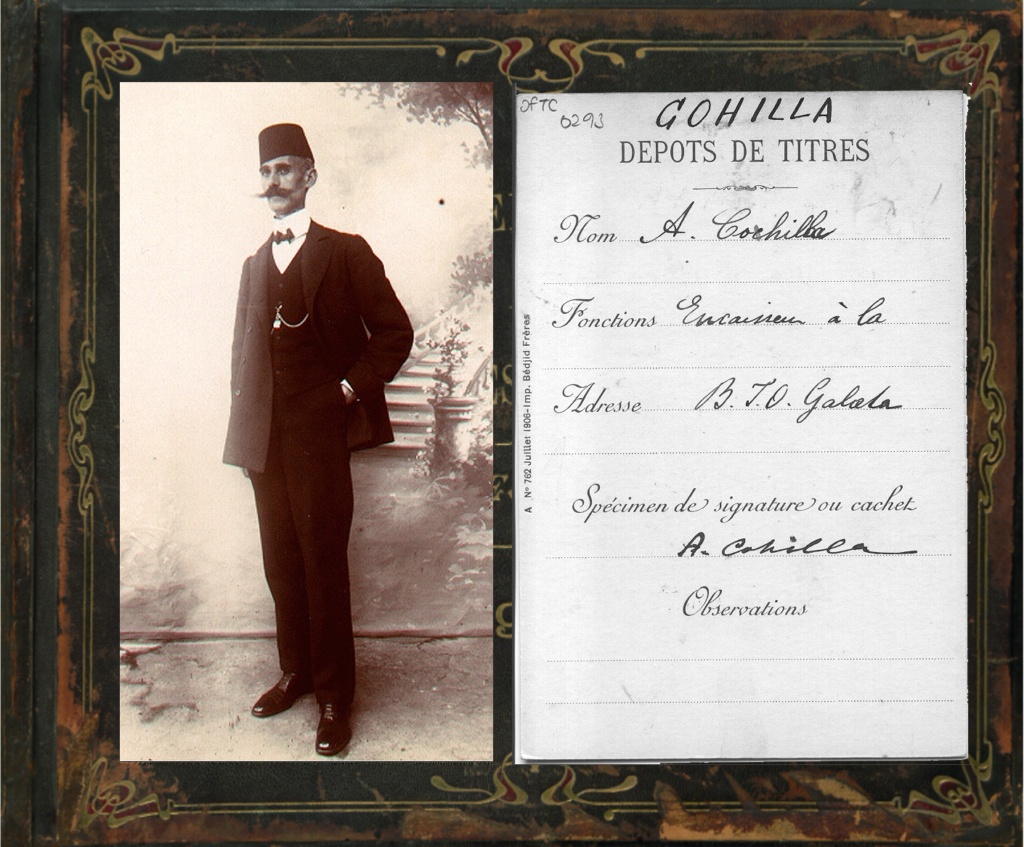

Photo above: courtesy of the Ottoman Bank museum & Garanti BBVA

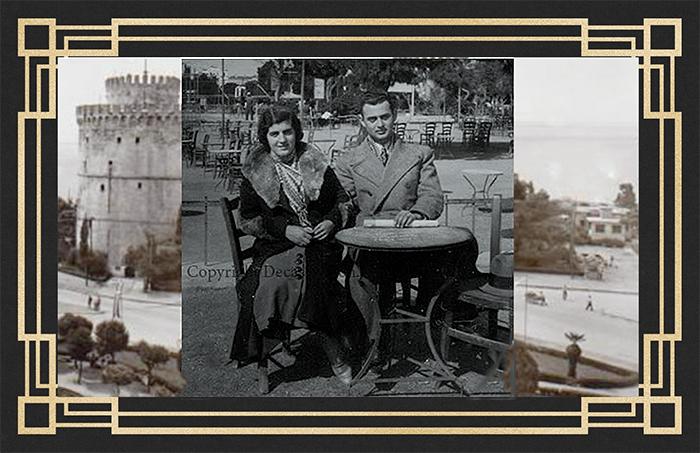

2) The ‘Georgiou’ Family – Agatha was the daughter of Alexis (alexandros) Spiropoulos scion of an old prestigious Greek family, he was the Army Quartermaster (Καταλυματιας, equivalent to Major) a big landowner with properties famed to be from Albania to Peloponnesus Greece, and the owner of the barracks were Yianko was stationed in North Peloponnesus . Info was passed down the family
Yianko’s family (Guentzburgh?) we believe originated from Rusaki ( Russland Deutschen) ancient Rabinnic German Jews (non Ashkenazi Levi Tribe) mixed with protestants and semi assimilated.
DNA suggests a trail from Ancient Egypt to Ancient Israel then Sardinia in Italy eventually through north Italy settling in Switzerland (YDNA close matches with Schweitzer) then moving to the German Palatinates (Schwarzwald Bavaria) from there to Bohemia (continuing to seeking refuge in protestant areas apparently) then Romania and Imperial Russia – Ukraine, then Greece.
The family engaged in spice and tea trade between Assam in India, the orient and Europe based in Ukraine, (Yanko’s name is of Ukrainian origin).
Their Caravan travelled through Turkey into Iran (autosomal DNA match found with a Greek family traditionally operating a horse farm near the borders of Turkey with Iran) on the way to Assam in India, (male DNA match with individual from the priestly caste of Assam) while engaging in this trade the family mixed with Pontian Greeks who had strong family business networks both in Turkey and Ukraine… enter the Greek connection .This info is based on DNA suggestions but also military orders/medals and papers containing a Germanic name and a very long Jewish one repeating a few times the word ‘ben’ plus Jewish hat, ancient shawl and samovar briefly in our posession
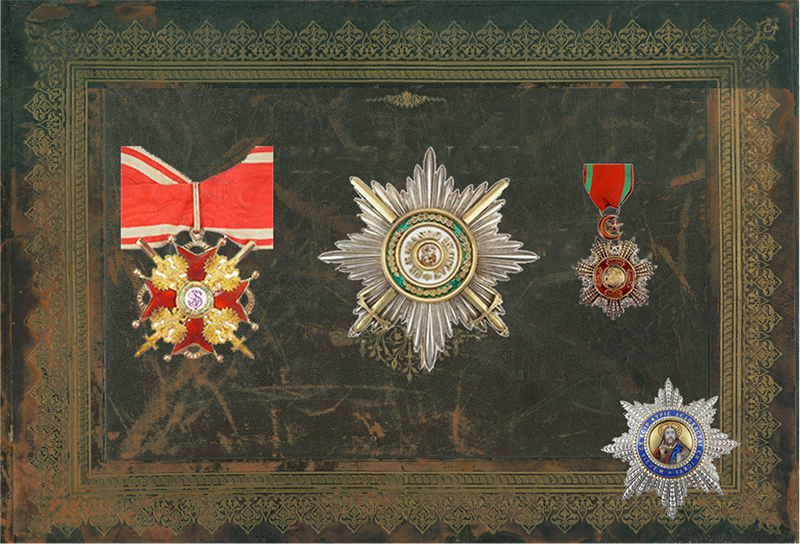
In Imperial Russia, Jews were at times forcebly enlisted in the army and so we assume was Yianko’s father (Pavel) and or grandfather .. An element of martial force was necessary in guiding a Caravan through foreign countries, so a voluntary entry to the Imperial Russian army is also a likely possibility, especially considering the high status and Russian nobility titles accompanying the Imperial Russian Orders received.
1853-1856 & 1877-1878 Following the Caucasus and Balkan wars we find the family in Greece. Russia successfully supported the Bulgarians against the Turks; following peace Ottoman medals were awarded to senior Russian officers including Pavel and Russian medals to senior Ottoman officers … eventually parts of Bulgaria became Greek.
This info is a bit murky, I have used the family Imperial Russian and Turkish Ottoman military orders/medals as evidence to support this story , but probably it is an incomplete one.


Following the Greco-Turkish war Spiro won a National scholarship contest run by the State to educate and populate their officer corps and was sent to France Paris to be educated in Aeronautics

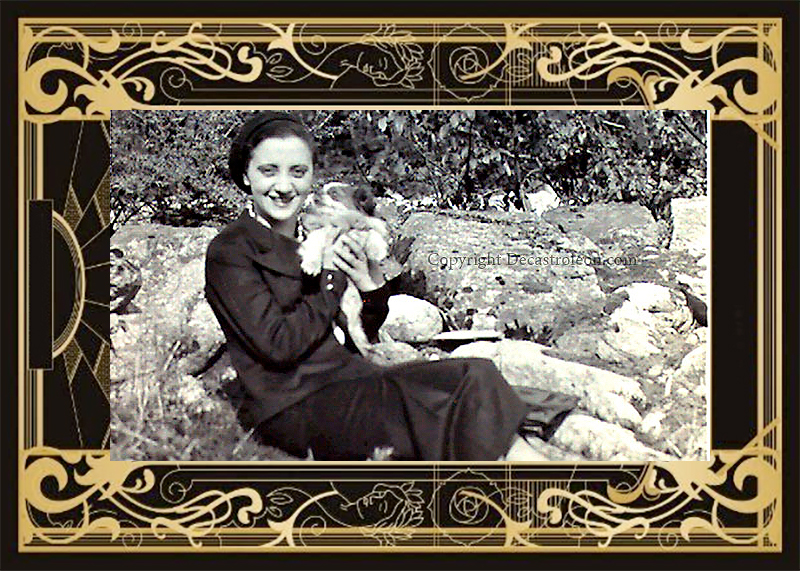
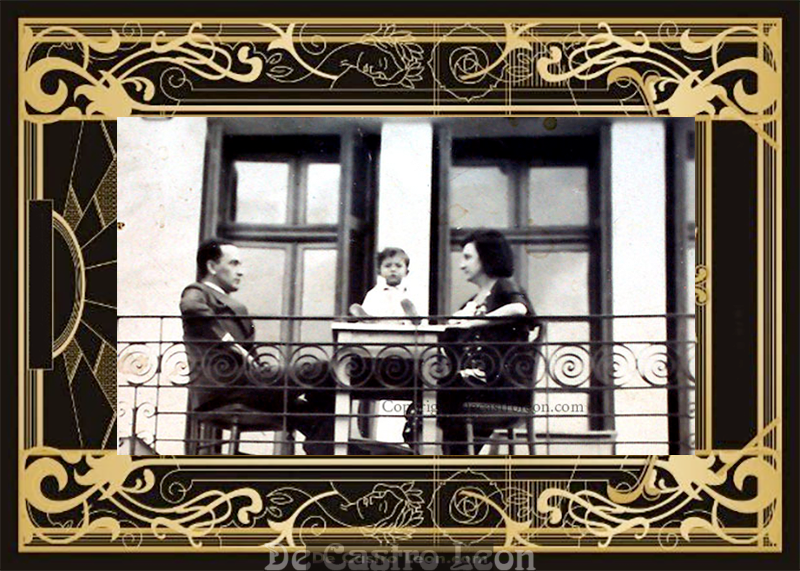
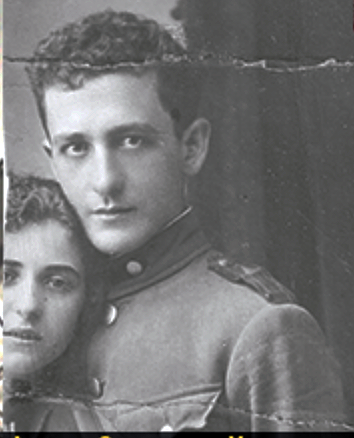

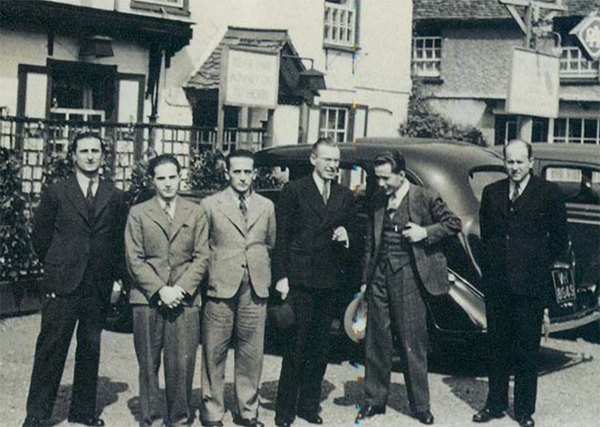






– Spiridon Georgiou (Σπυριδων Γεωργιου) : 1919 1st Infantry Corps of Asia Minor, 1936 Air Squadron Leader, 1948 Chief Air Marshal
Spiro received many medals and orders in his years in the army (some pictured above) including a commendation by the Greek parliament for converting airplanes to bombers during the civil war.
Following below are press articles, mentioning among other Spiro’s presentation to Greek PM Metaxas, the first in PDF format the other two are in ‘microfilm’ type image format, after download you need to zoom in to read.

This Historical recount may be amended as more information trckles in to our research team
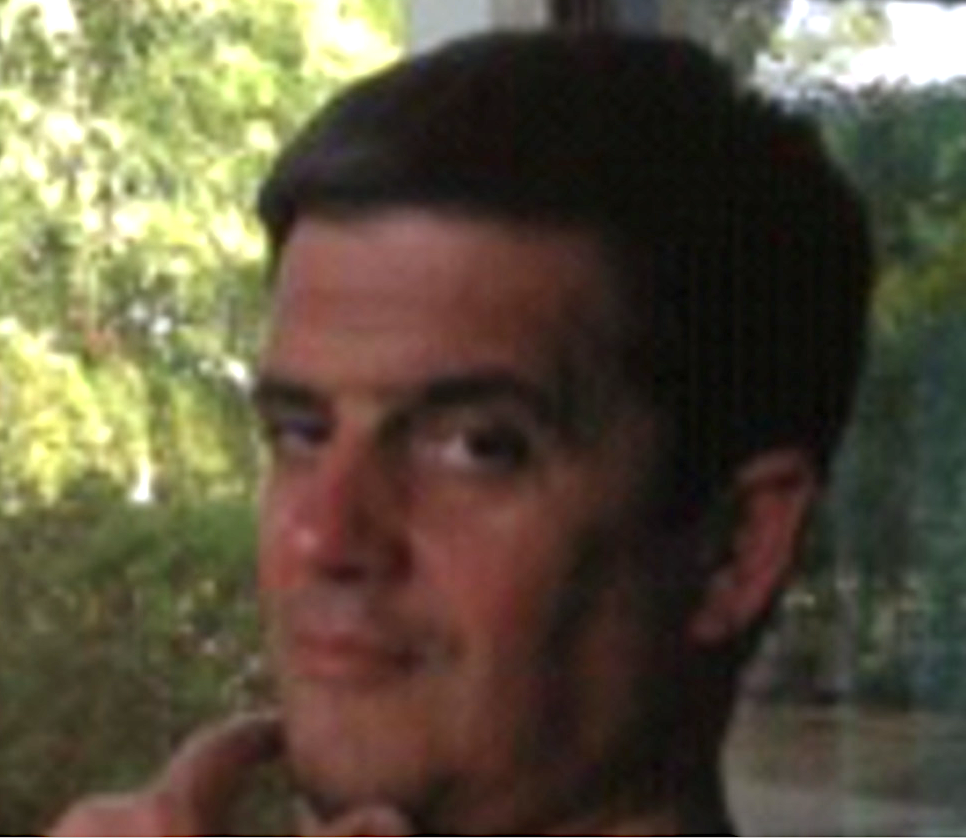
Here we analyse in brief several YDNA and autosomal DNA Haplogroups of interest